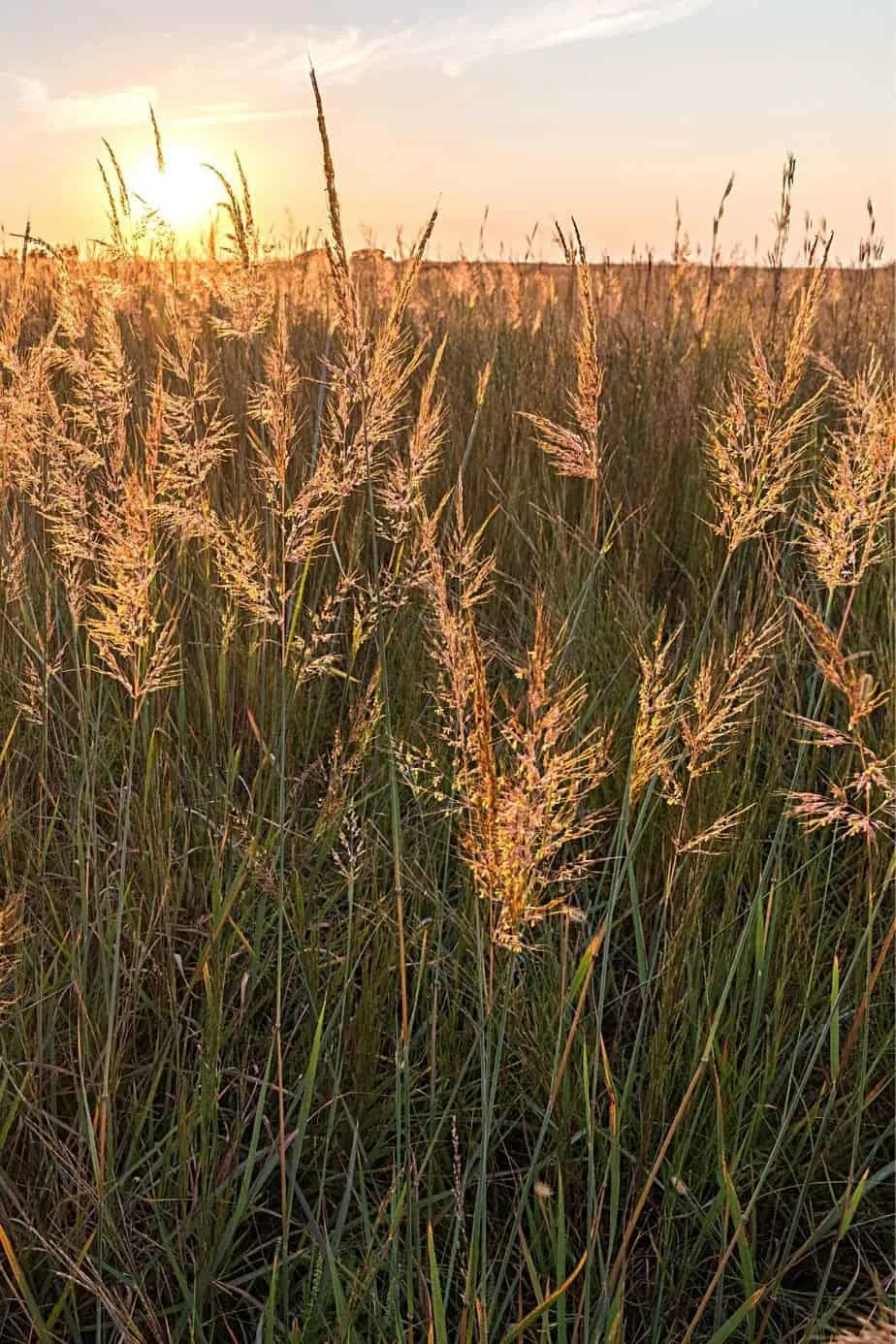Best Plants for Privacy. Do you wish to add some great plants for privacy to your outdoor space?
You don’t need to construct a barrier or a solid fence to provide privacy. With gorgeous flora, it’s simple to keep everything to yourself.
These plants will not only screen your neighbors off, but they’ll also add a lovely natural atmosphere to your outside space.

Best Plants for Privacy
Table of Contents
1. Butterfly Bush
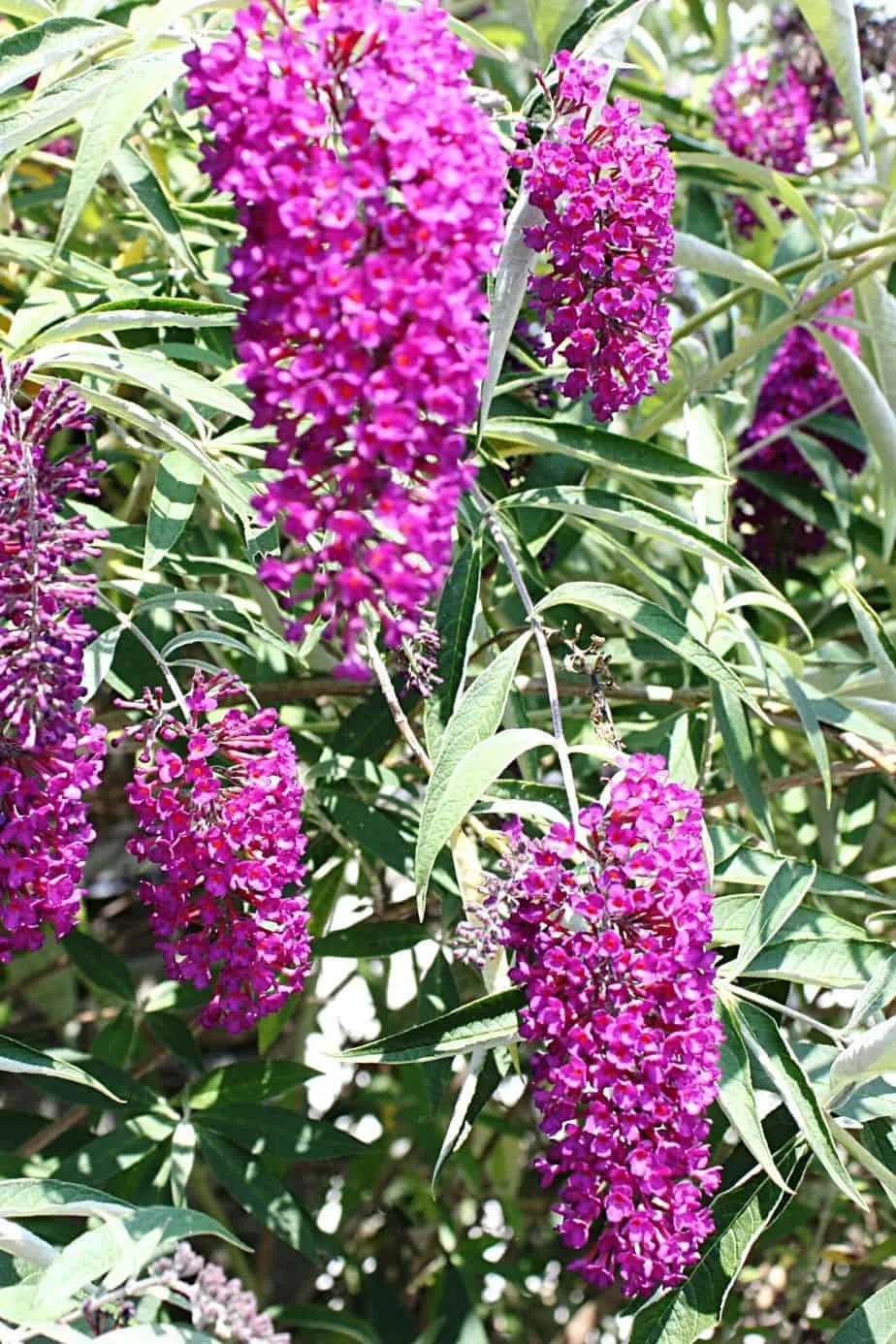
Butterfly Bush is a great plant for privacy as not only does it provide some sort of a fence, it attracts pollinating insects also
This bush’s bushy purple blossoms entice bees and other pollinating insects, making it a good choice for privacy in agricultural gardening.
The butterfly bush has the benefit of being tolerant to drought and blooms from springtime to autumn. It’s crucial to double-check before purchasing any type.
- Scientific name: Buddleja
- Light: Flourishes in full sun
- Soil: Well-draining, clayey soil
- Water: An inch of water during the growing season every week
- Fertilizer: Granular balanced fertilizer during spring
- Temperature: 90 degrees Fahrenheit (32 degrees Celsius)
- Humidity: Moderate
2. English Ivy
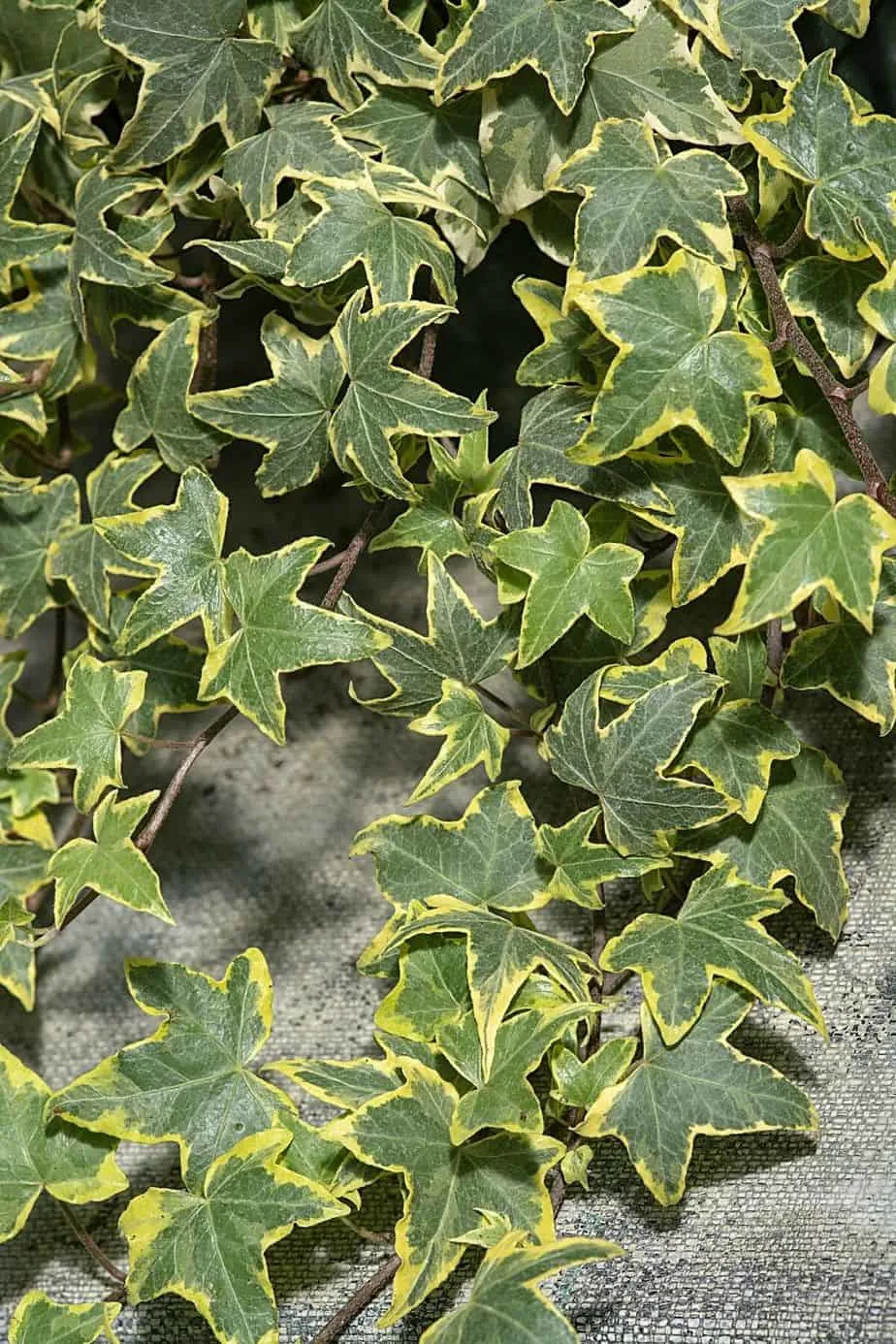
English Ivy, with the help of a wooden frame to aid it when it’s spreading, is another great plant to be used for privacy
One of the simplest hanging plants to cultivate for security is English Ivy. It’s wonderful for all-year coverage but requires structural support to develop.
A wood frame will perform well and aid in the rapid spread of the plant.
The English ivy is growing very densely, according to the University of Maryland, making it a perfect plant for increased privacy.
Regarding upkeep, English Ivy in pots needs water and nutrients. Also, throughout the wintertime, don’t neglect to safeguard the roots.
- Scientific name: Hedera helix
- Light: Bright indirect sunlight
- Soil: Well-draining, moist and fertile
- Water: Thorough watering while allowing ½ inch to dry between watering
- Fertilizer: Every two weeks through spring and summer with a fertilizer that’s organic and balanced
- Temperature: 70 to 90 degrees Fahrenheit (21-32 degrees Celsius)
- Humidity: 40% or higher
3. Yellow Indiangrass
Yellow Indiangrass has blue-green leaves and is a magnificent perennial. It may reach 3 feet tall and transform any garden or balcony.
Yellow Indiangrass is a fantastic plant for porches as it can thrive in full sun or light shade. It enjoys thin, well-drained soil and doesn’t require any maintenance.
- Scientific name: Sorghastrum nutans
- Light: Full to partial shade
- Soil: Moist, sandy, or clayey loam
- Water: Medium watering every two weeks
- Fertilizer: Moderate amount of potassium and phosphorus is needed
- Temperature: 85 to 95 degrees Fahrenheit (29-35 degrees Celsius)
4. Big Bluestem
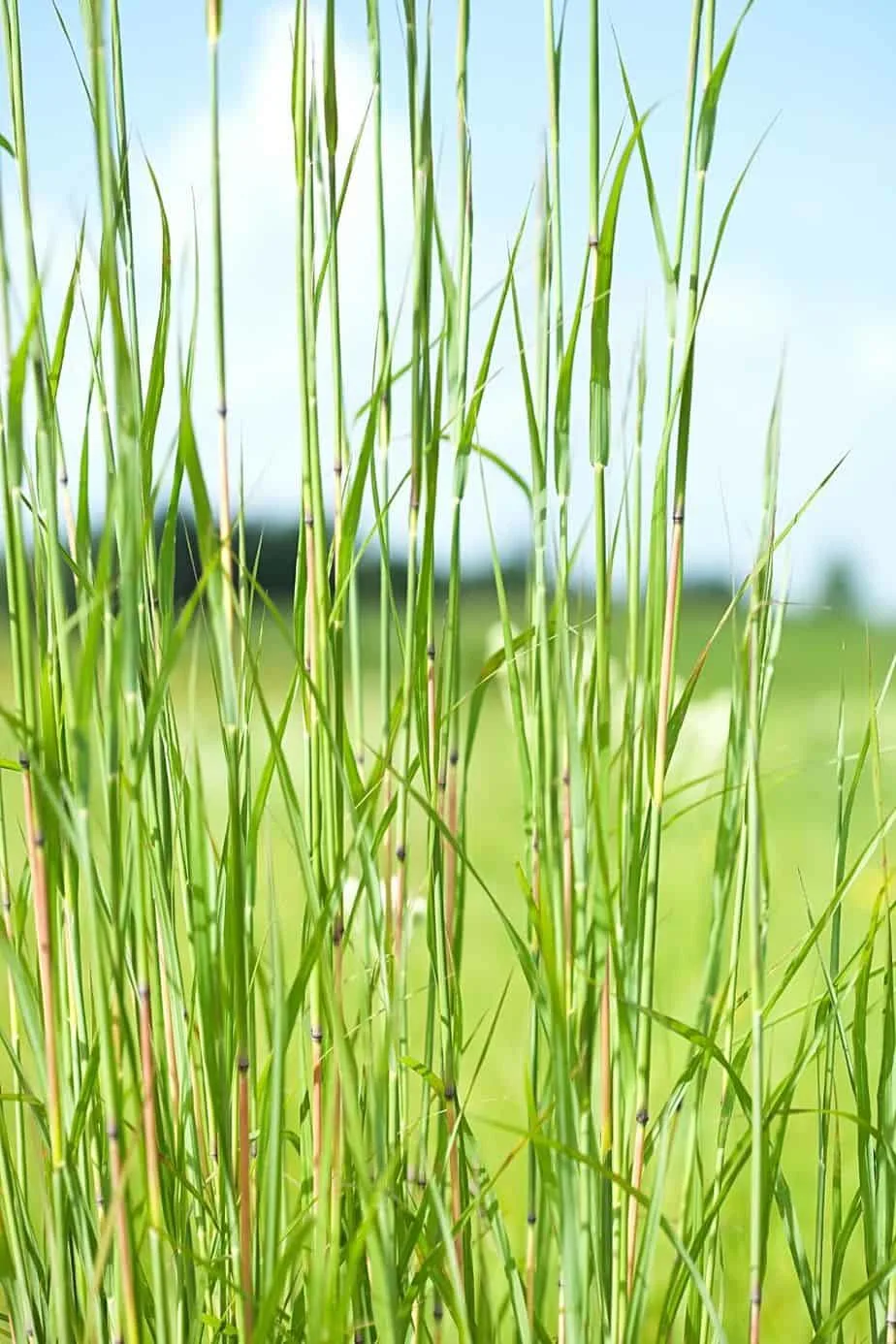
As the Big Bluestem can be quite invasive when planted in pots, it’s better to grow them like a hedge for privacy
Big Bluestem is a robust decorative grass that looks great on the balcony and easily grows. The plant may grow in various situations but thrives in direct sunlight.
Big Bluestem can become intrusive when grown in potting soil.
It may thrive in several soil types, including sandy and clay, if well-draining. Big Bluestem is tolerant to drought once rooted; however, pot plants thrive from frequent irrigation.
- Scientific name: Andropogon gerardii
- Light: Partial shade to full sun
- Soil: Loamy, sand soil
- Water: Young plant requires frequent watering
- Fertilizer: Nitrogen-rich fertilizer during the spring season
- Temperature: 80 to 90 degrees Fahrenheit (26-32 degrees Celsius)
- Humidity: 35% to 50%
5. Bamboo
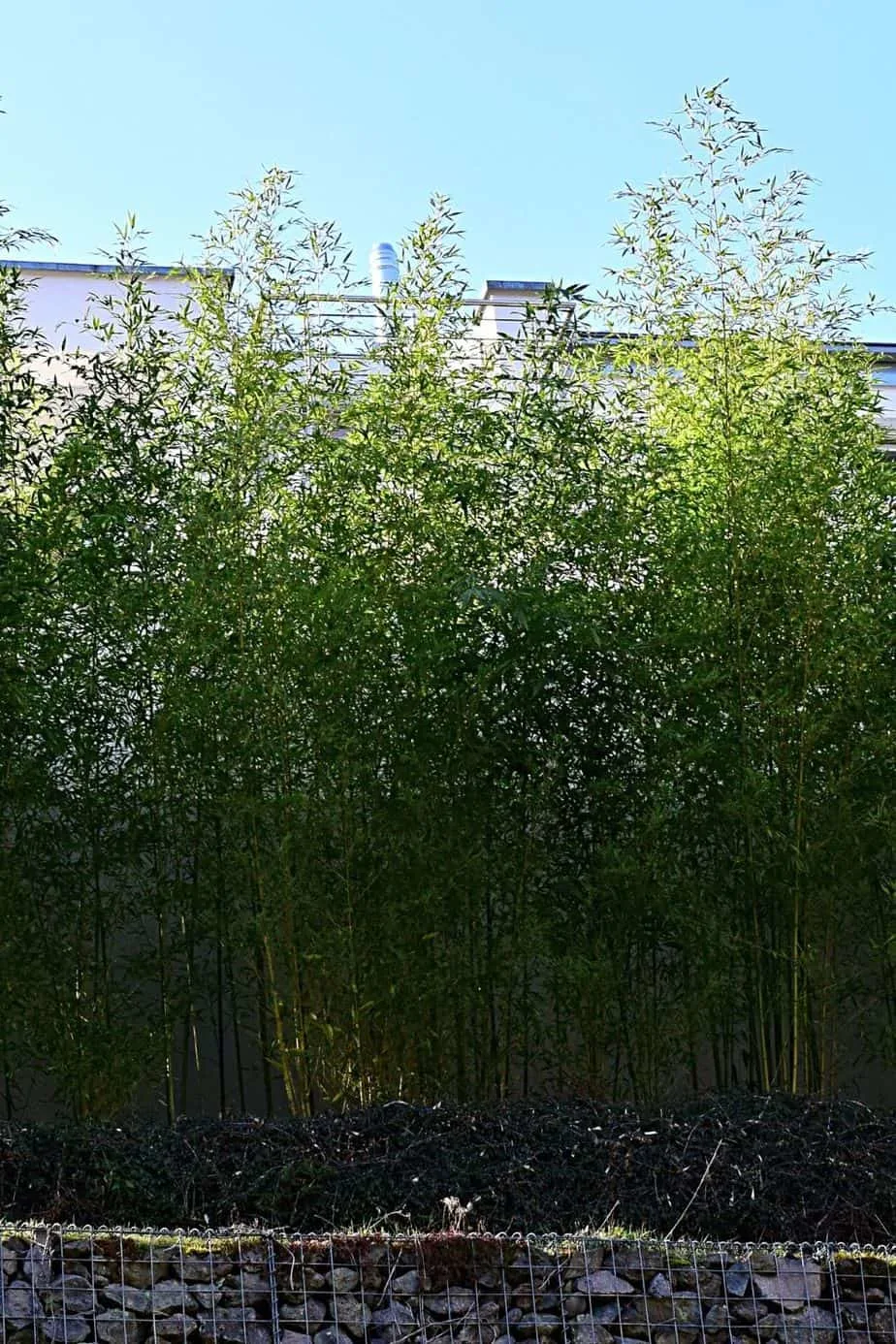
Bamboo grows rapidly and can give you a hedge in no time for privacy
Bamboo is among the world’s quickest-growing species, so it may grow rapidly into a rich and exotic privacy barrier.
Because certain bamboo kinds are aggressive, choose a slow-spreading, compact type or plant it in huge, elevated pots to keep it in check.
- Scientific name: Bambusoideae
- Light: 6 hours of direct sun daily
- Soil: Well-draining, deep and fertile soil
- Water: Deep watering at least 8 to 12 inches
- Fertilizer: Nitrogen-rich grass fertilizer thrice during the growing season
- Temperature: 60 to 70 degrees Fahrenheit (15-21 degrees Celsius)
- Humidity: 60% to 80%
6. Arborvitae
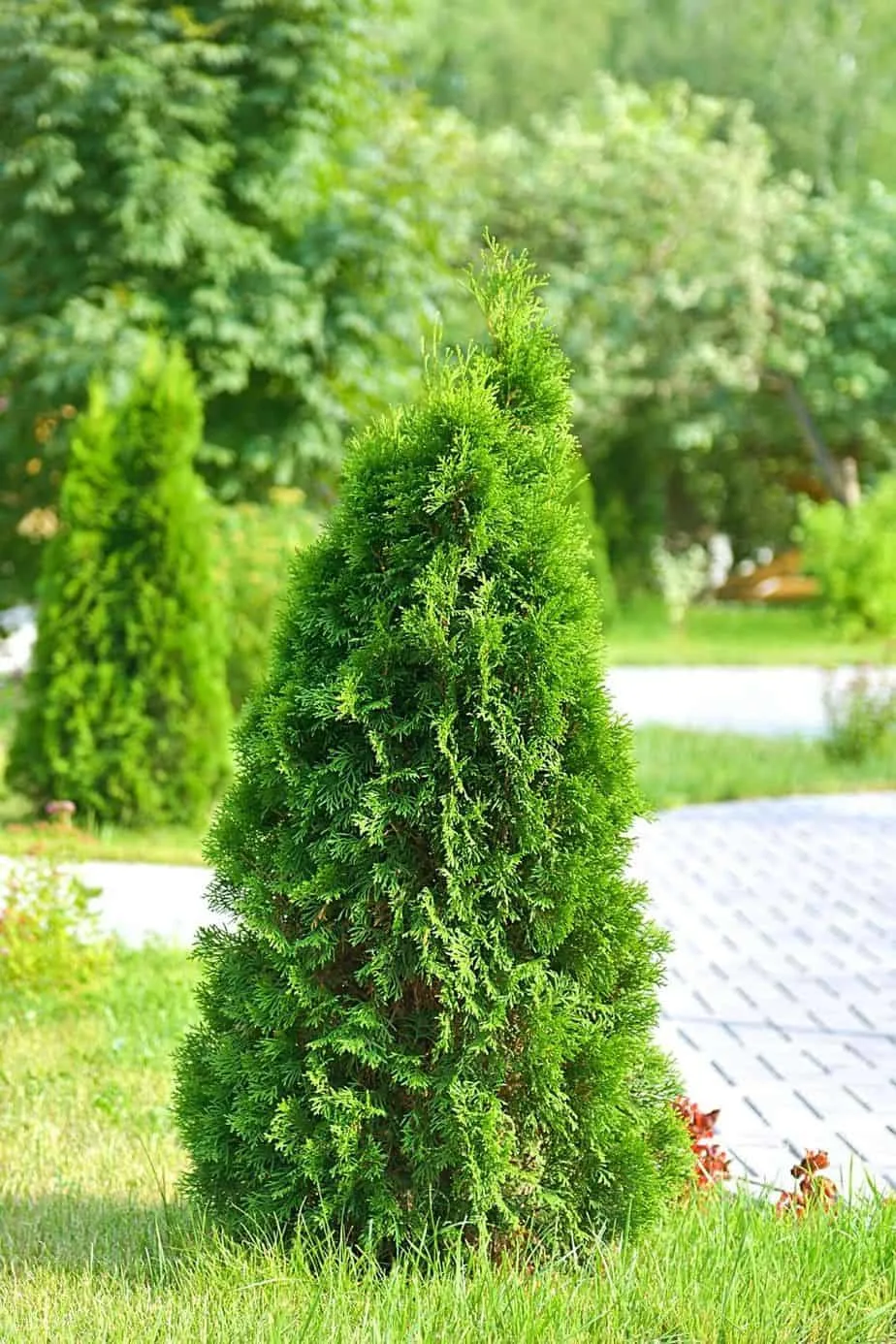
Arborvitae is one of the most preferred plants for privacy
Arborvitae is one of the most preferred species for a natural privacy wall for various factors. When correctly placed, its lush green leaves form a thick wall; it withstands most soil types and is low-maintenance.
When selecting arborvitae for your area, remember that there are various types of sizes, ranging from dwarf to huge.
- Scientific name: Thuja
- Light: 6 hours or more of direct sunlight
- Soil: Loamy, well-draining, moist soil
- Water: Needs ample watering, around 10 gallons
- Fertilizer: Slow-release containing 50% Nitrogen
- Temperature: Prefers cold conditions
- Humidity: Low humidity
7. Princess Flower
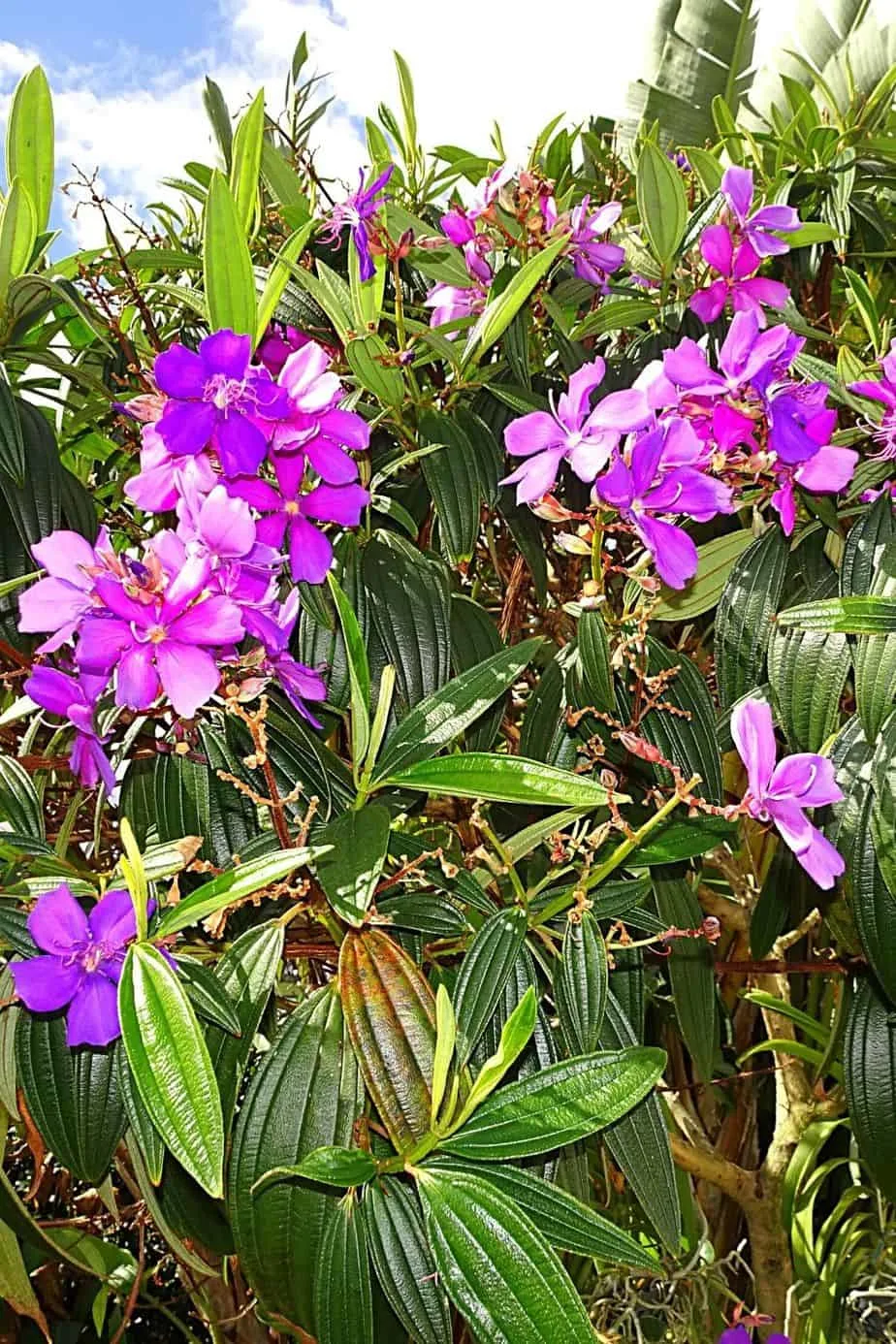
Princess Flower, with its hardy nature, is another great plant to grow for privacy
Princess Flower is a magnificent plant well-known for its lovely purple blossoms and long flowering season. The plant thrives in full light and is resistant in zones nine to eleven.
To give Princess Flower the greatest chance, grow it in rich, nutritious, mildly acidic, and well-draining soils.
Once a year, encourage growth with natural fertilizer and admire the stunning display of purple blooms.
Princess Flower is drought-hardy but prefers to grow in a continuously moist environment.
- Scientific name: Tibouchina urvilleana
- Light: Full sun
- Soil: Well-draining, acidic soil
- Water: Regular watering but water it once a week during the hot season
- Fertilizer: Acid-loving plant fertilizer during spring, fall, and summer
- Temperature: 65 to 75 degrees Fahrenheit (18-23 degrees Celsius)
- Humidity: Moderate
8. Canna Lily
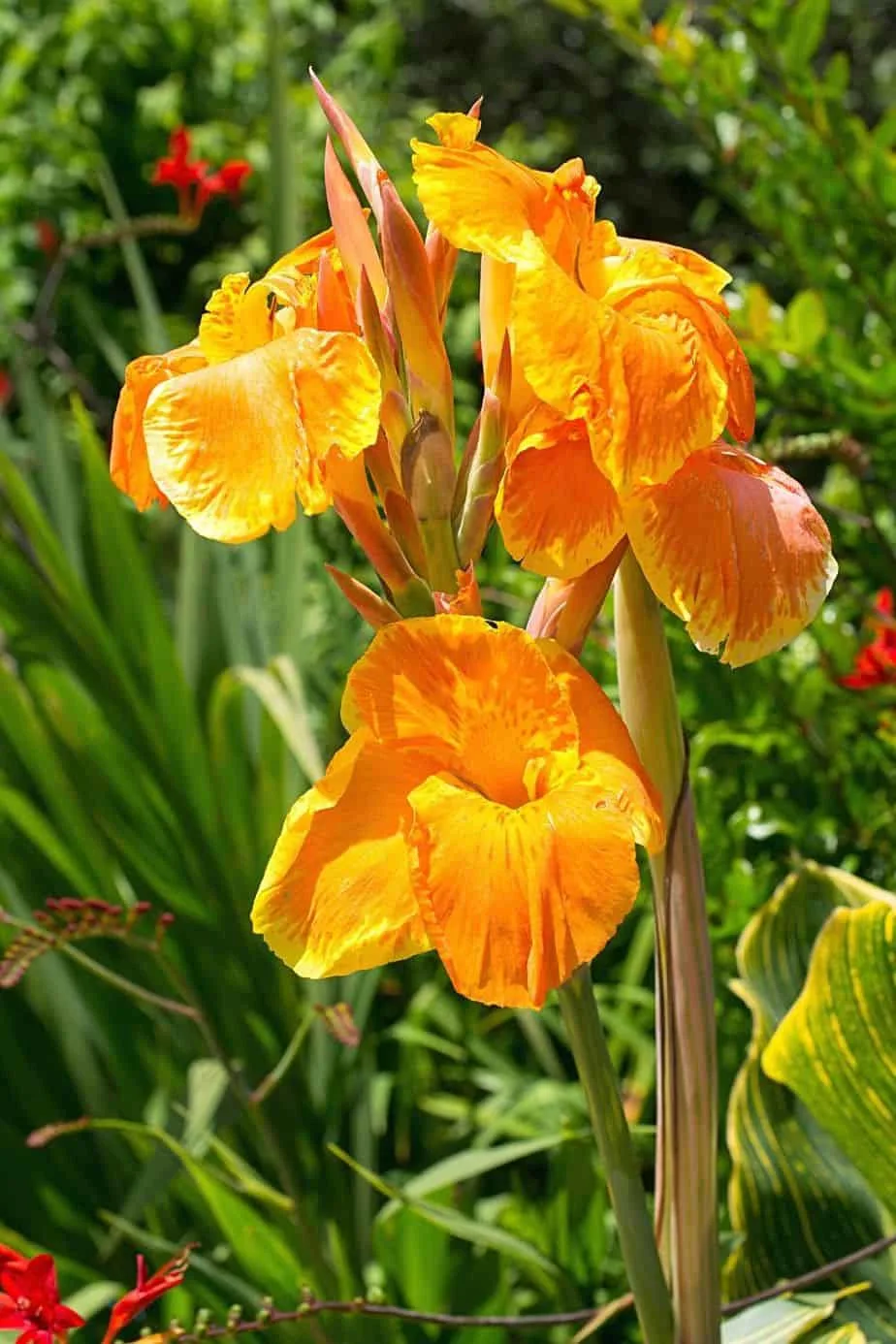
Canna Lily has thick, colorful blooms that can be grown as a great plant for privacy
Canna Lily is a plant that isn’t always considered a privacy plant. On the other hand, Canna Lily has dense, rich leaves and lovely blooms that can be used as a privacy barrier.
Throughout the flowering period in the summer and autumn, the plant is at its most gorgeous. Canna Lily is resistant in zones seven to eleven and requires plenty of sunlight to flourish.
Grow it in the early part of summer and spring for optimal outcomes.
- Scientific name: Canna
- Light: Full sun
- Soil: Well-draining, organic, moist soil
- Water: Water thoroughly before watering it after three weeks
- Fertilizer: Organic or slow-release
- Temperature: 32 degrees Celsius (90 degrees Fahrenheit)
- Humidity: Moderate
9. Rose of Sharon
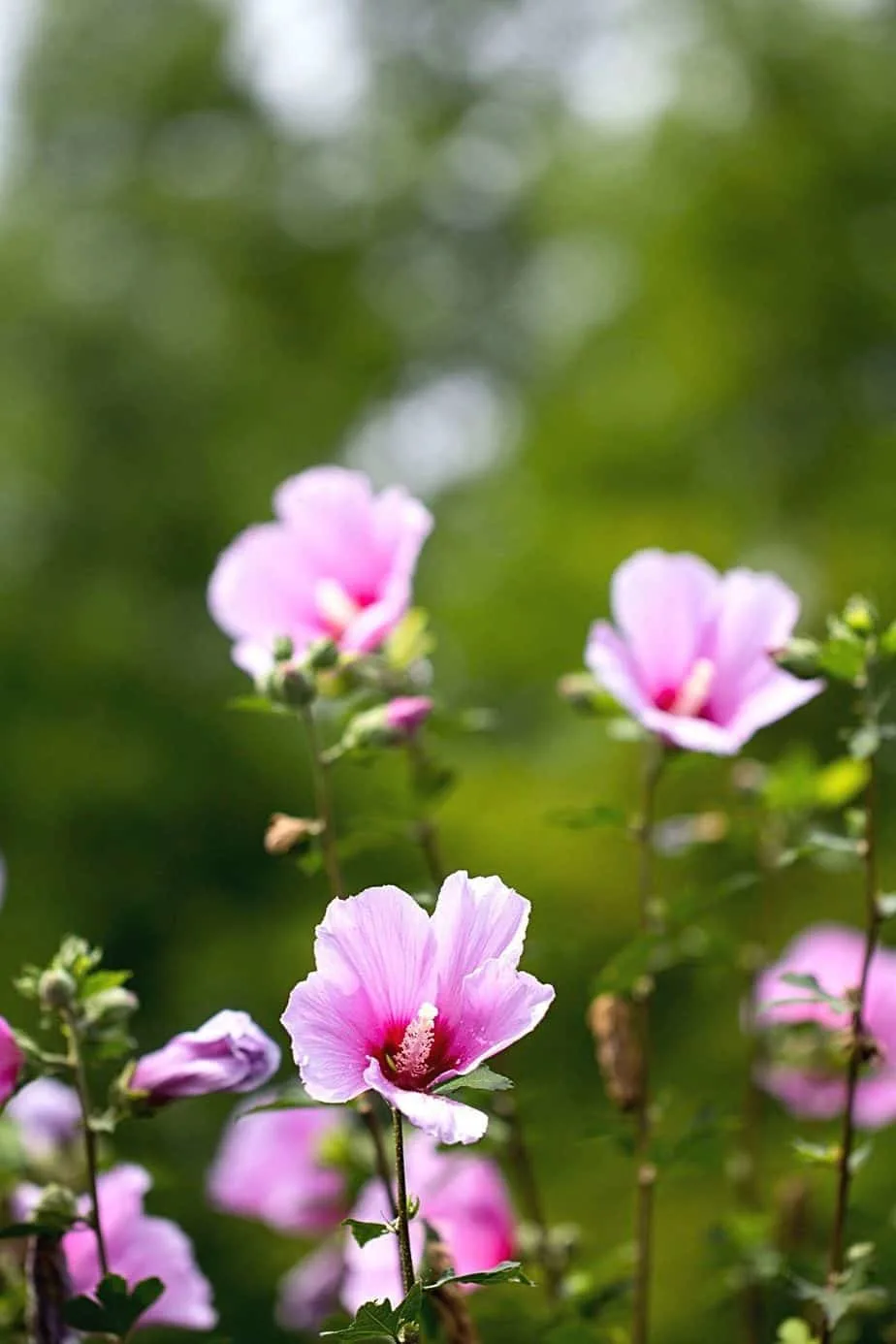
As the Rose of Sharon can grow up to 12 feet tall, it’s one of the best plants to grow for privacy
Rose of Sharon, often known as hibiscus, has lovely blooms and can grow 12 feet tall! As a result, it’s an excellent hedge for privacy.
Rose of Sharon can be grown from seeds in well-draining, mild soil. Drainage can be improved by using peat moss or vermiculite.
To reach its greatest capacity, the plant requires constant hydration. Maintain your Rose of Sharon in full daylight for the greatest blooms and feed it with a balanced nutrient.
- Scientific name: Hibiscus syriacus
- Light: Partial shade to full sun
- Soil: Well-draining, alkaline, and moist soil
- Water: 1 inch of watering weekly
- Fertilizer: Light application of balanced fertilizer
- Temperature: 20 degrees Fahrenheit (-6 degrees Celsius)
- Humidity: Moderate
10. Hops

Though Hops can be quite tricky to grow, you can plant it in your garden for privacy
Hops may be more difficult to grow in pots than in garden soil. You can, however, make it happen.
For stability, use a huge flexible trellis and a large pot to hold the plant’s base. Don’t allow the plant to dry out; hydrate it if the soil seems dry.
To ensure that the plant receives sufficient nutrition, treat it with diluted fertilizer.
- Scientific name: Humulus lupulus
- Light: 6 to 8 hours of direct sun
- Soil: Sandy loam and well-draining
- Water: 1 ½ inch of watering every week
- Fertilizer: Organic fertilizer for optimum growth
- Temperature: 40 degrees Fahrenheit (4 degrees Celsius)
- Humidity: 8 to 12 percent
11. Hicks Yew
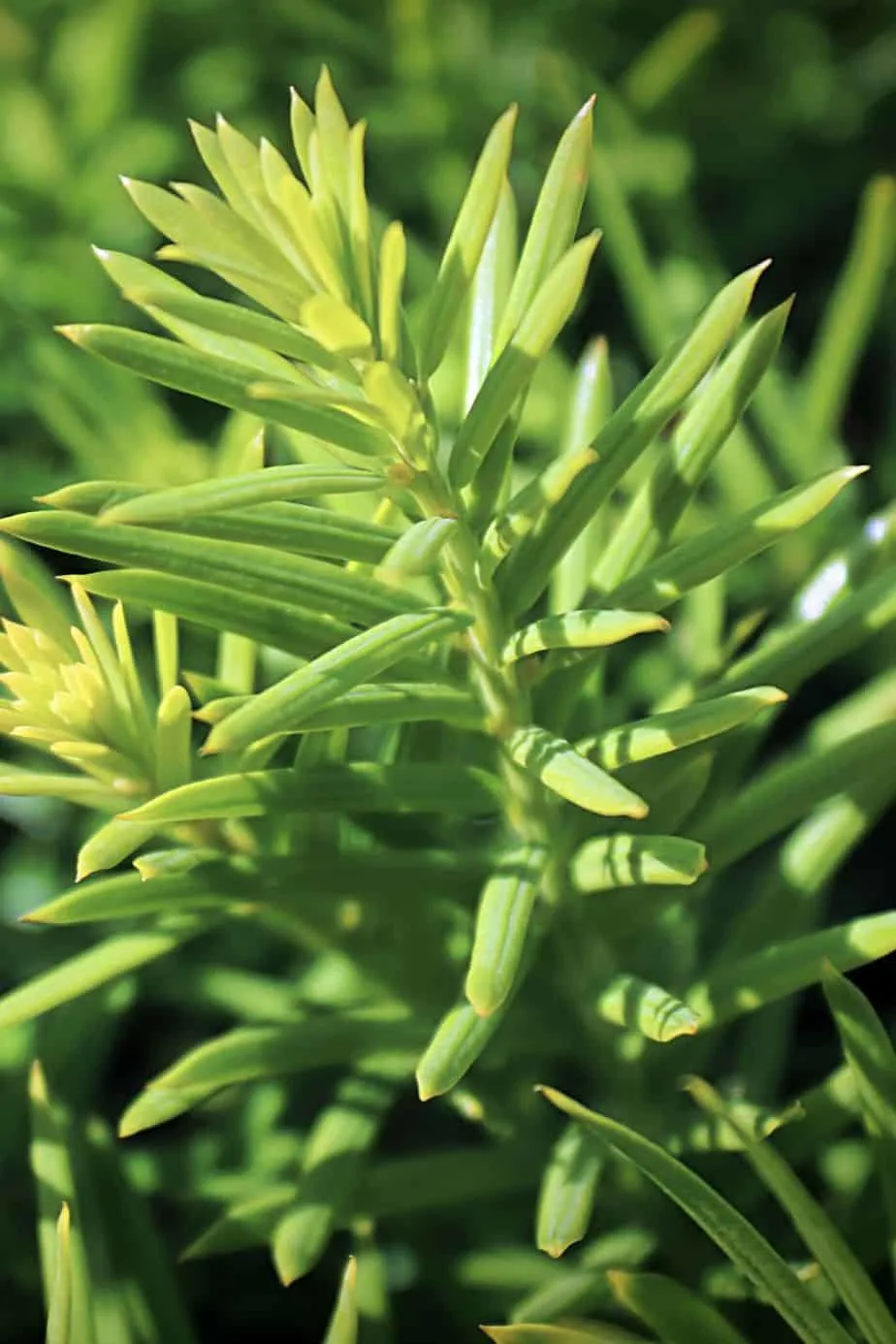
Hicks Yew is a practical option to grow for privacy like a green wall
While not showy, Hicks yew is a practical option for a green wall or privacy barrier.
This low-maintenance selection provides a lovely green background for the rest of the garden, and its smooth leaves and winter fruits make it a popular choice with outdoor wildlife.
- Scientific name: Taxus × media
- Light: Prefers full sun to partial shade
- Soil: Alkaline, acidic to neutral soil
- Water: One inch of watering every week during the summer season
- Fertilizer: Once every three weeks with nitrogen-rich fertilizer
- Temperature: Requires moderate temperature
12. Skip Laurel
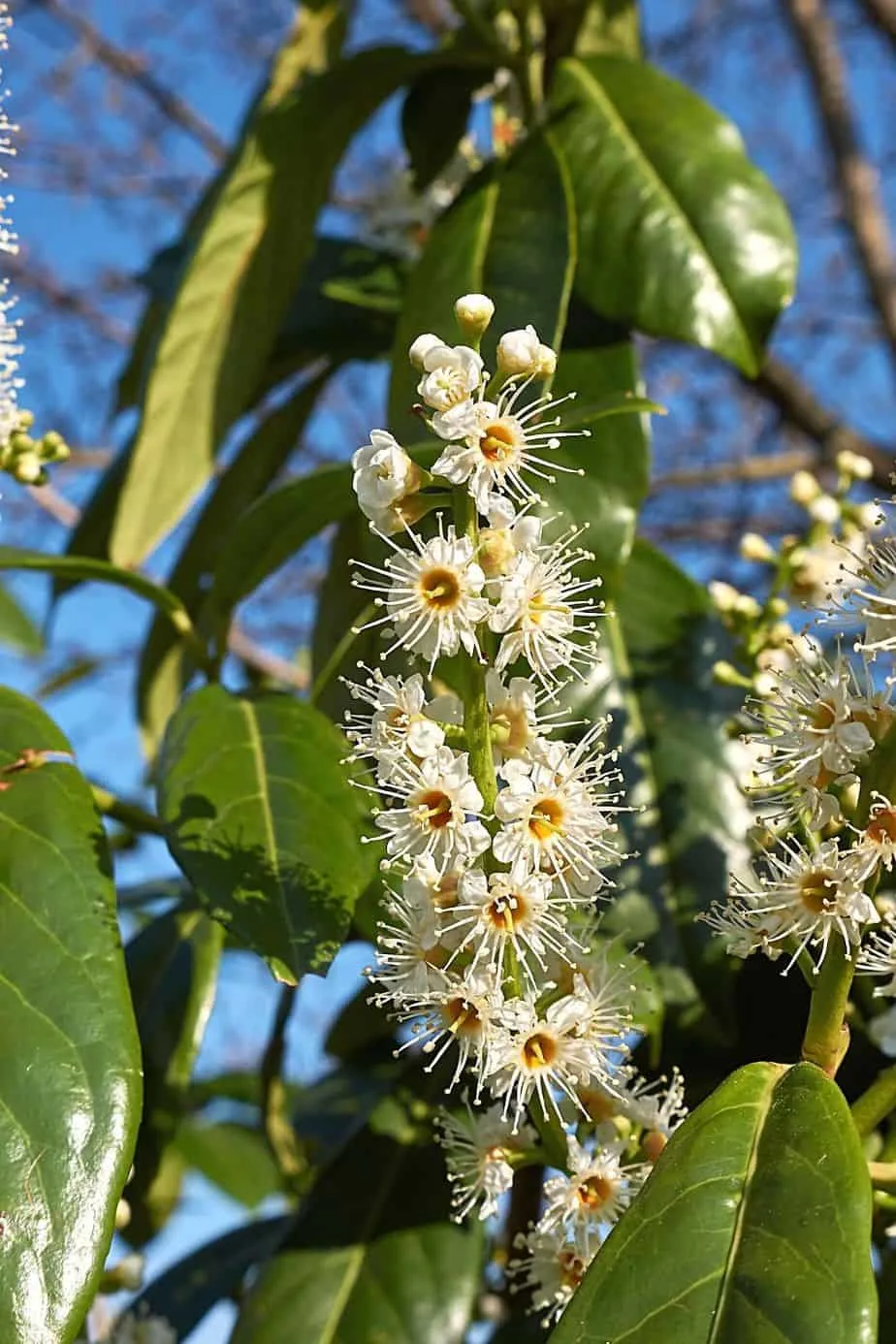
Skip Laurel is another perfect plant for privacy as you can grow them as a 10-foot tall barrier
Skip laurel is the greatest option if you love landscaping and caring for plants. The end effect is intriguing despite your Skip Laurel requiring some effort in growing it.
The dense everlasting leaves of skip laurel can be transformed into a stunning 10 ft tall privacy wall with annual trimming and styling.
But, it isn’t appropriate for all climates and soil compositions. Ensure it gets sunlight (lots of it) and is planted in well-drained soil.
The best thing is that your private plant will surprise you with white flowers in the spring.
- Scientific name: Prunus laurocerasus
- Light: Moderate sun to partial shade
- Soil: Clayey, sandy, and alkaline soil
- Water: Initially, water it daily, then once established, water it once a week
- Fertilizer: Slow-release fertilizer during spring
- Temperature: Cold-resistant
13. Amaranth
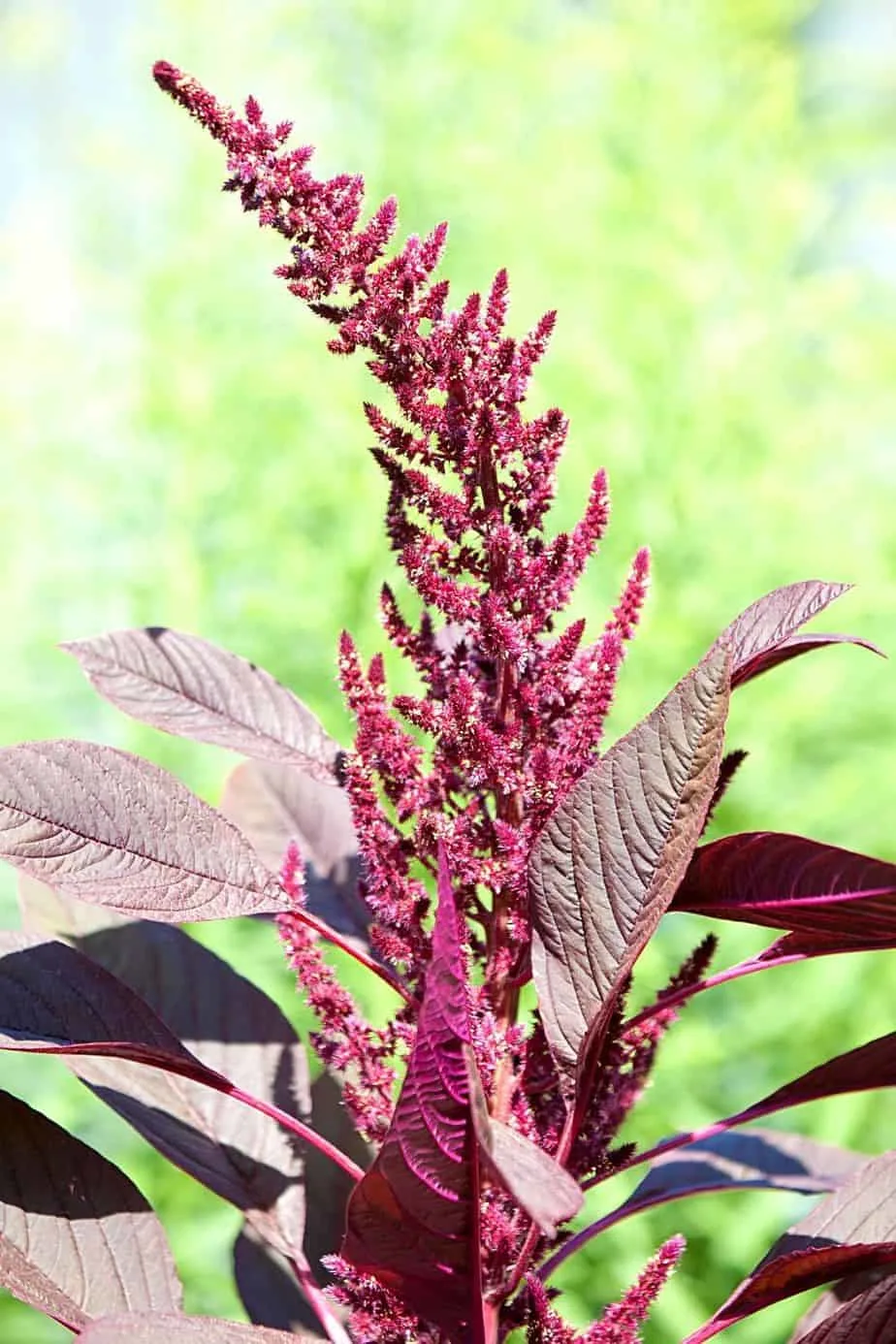
Amaranth is another great plant to grow for privacy and landscaping
Amaranth is a one-of-a-kind plant. It’s ideal for teas, landscaping, and wheat production.
Amaranth is a weed; however, you can cultivate it to keep your nosy neighbors at bay!
Amaranth is a low-maintenance plant that can be effectively grown from seeds. Hydrate the plant sparingly but keep the watering regimen constant.
To maintain the plant-strong, you can supplement the soil with natural fertilizer.
- Scientific name: Amaranthus
- Light: 6 hours of direct sun
- Soil: Well-draining, rich soil
- Water: No more than one inch
- Fertilizer: Doesn’t require any supplemental feeding
- Temperature: 70-85 degrees Fahrenheit (21-29 degrees Celsius)
- Humidity: 40 to 60 percent
14. Viburnum
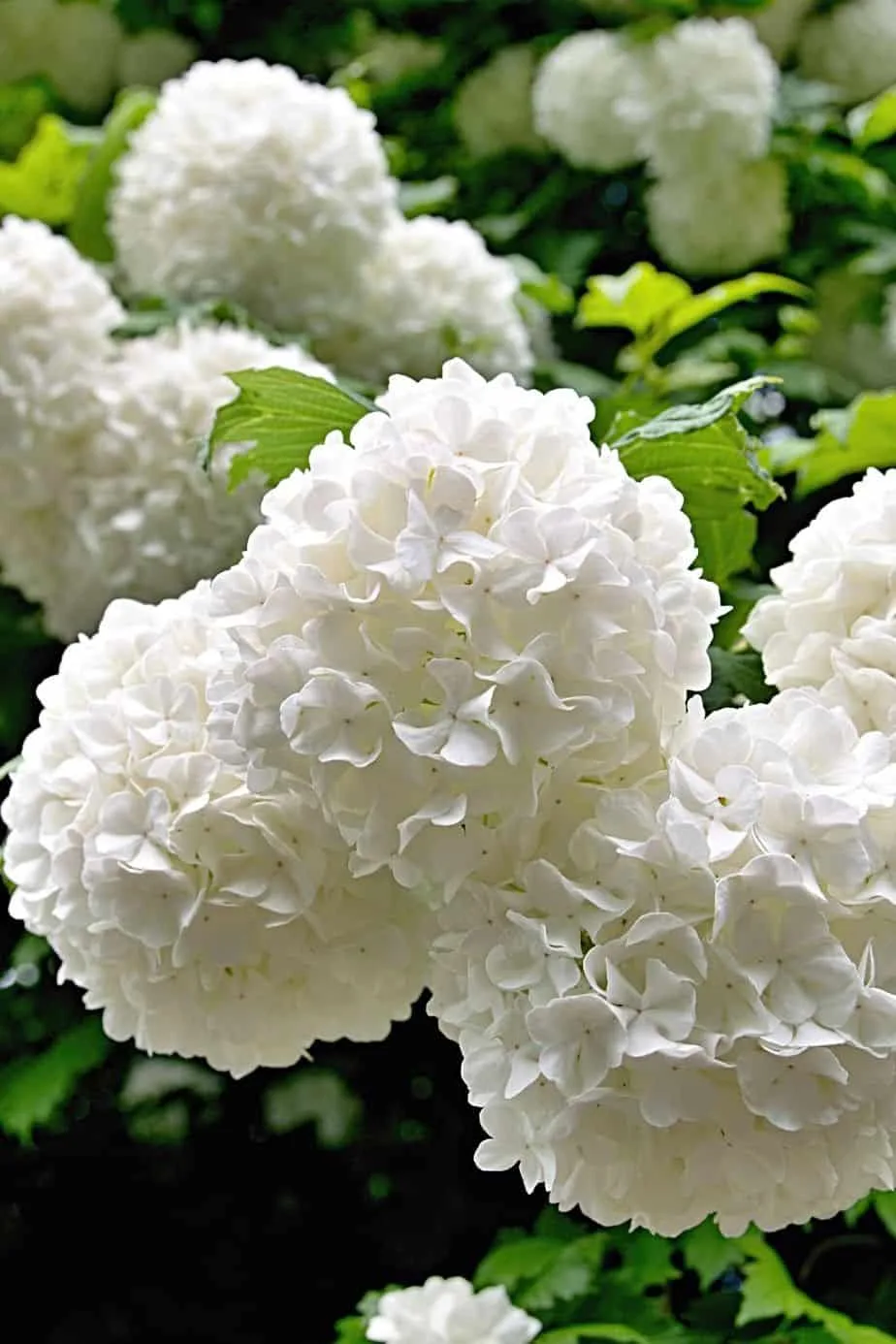
Viburnum, though they’re more commonly grown in pots and placed in porches, is another great plant to grow for privacy
Viburnum is an excellent porch plant to cultivate in containers. The plant requires plenty of sun and good, well-draining soil to thrive.
Viburnum can withstand shade, although it will not bloom as profusely as in the sun. In most areas, Viburnum can be planted in the fall or spring.
Water your Viburnum in a pot regularly and observe it grow.
- Scientific name: Viburnum
- Light: Requires full sun but can thrive in partial shade
- Soil: Well-draining, moist, slightly acidic
- Water: When the top inch feels like dry water, the plant
- Fertilizer: Rotted manures, compost, and fish emulsion
- Temperature: 10 to 15 degrees Fahrenheit (-12 to -9 degrees Celsius)
- Humidity: Moderate
15. Horsetail

Horsetail, though it’s not as attractive as other blooming plants, is another great plant to grow for privacy
Horsetail is a non-flowering perennial that is evergreen. Horsetail may not look as lovely as some of the other blooms on this list, but it will provide great privacy for your porch.
Horsetail can be grown in direct sunlight or light shade in wet, well-draining soil. Horsetail may also turn your balcony into a contemporary wilderness, and it doesn’t take much effort to cultivate.
- Scientific name: Equisetum
- Light: Partial shade or full sun
- Soil: Well-draining, moist soil
- Water: Moderate watering or about four inches deep
- Fertilizer: Fertilizing is not needed
- Temperature: 41 to 67 degrees Fahrenheit (5-19 degrees Celsius)
- Humidity: High
16. Fuchsia
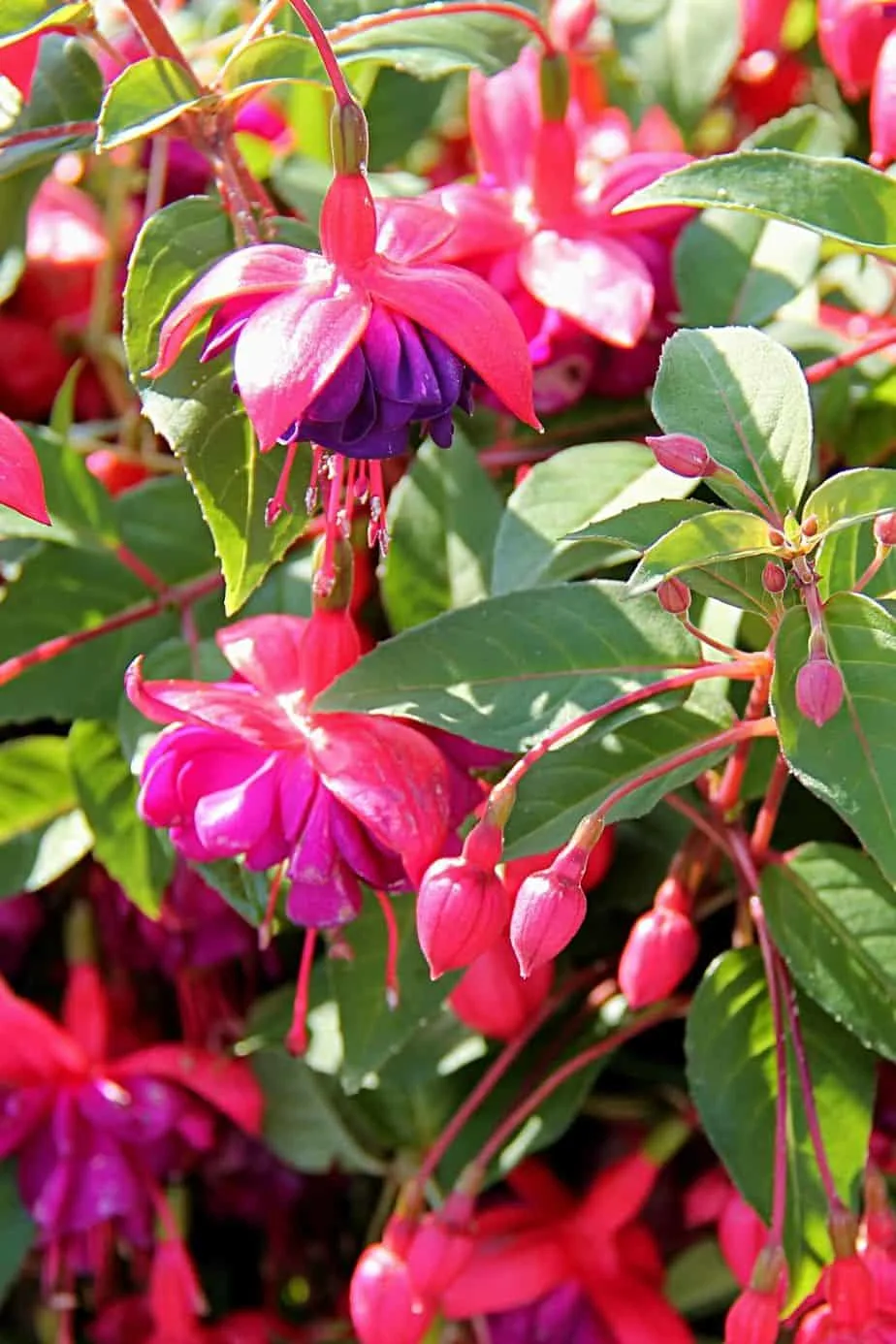
Fuchsia is a top plant choice for privacy if your garden’s not well-lit
Your privacy plant options are restricted if your home doesn’t get much light. Choose Fuchsia as being one of the finest shadow privacy hedges.
A good-quality planting mixture and constantly wet soil are required for Fuchsia. Fuchsia requires a lot of humidity as it is a tropical plant. To increase moisture, spray the Fuchsia with water.
Throughout the winter, either shelter the plant or choose a frost-hardy variety.
- Scientific name: Fuchsia
- Light: Indirect strong sunlight
- Soil: Well-draining moist soil
- Water: Consistent watering but does not like to be soaked in
- Fertilizer: Diluted liquid fertilizer during the active growing season
- Temperature: 60 to 70 degrees Fahrenheit (15-21 degrees Celsius)
- Humidity: 40% or higher
17. Elderberry
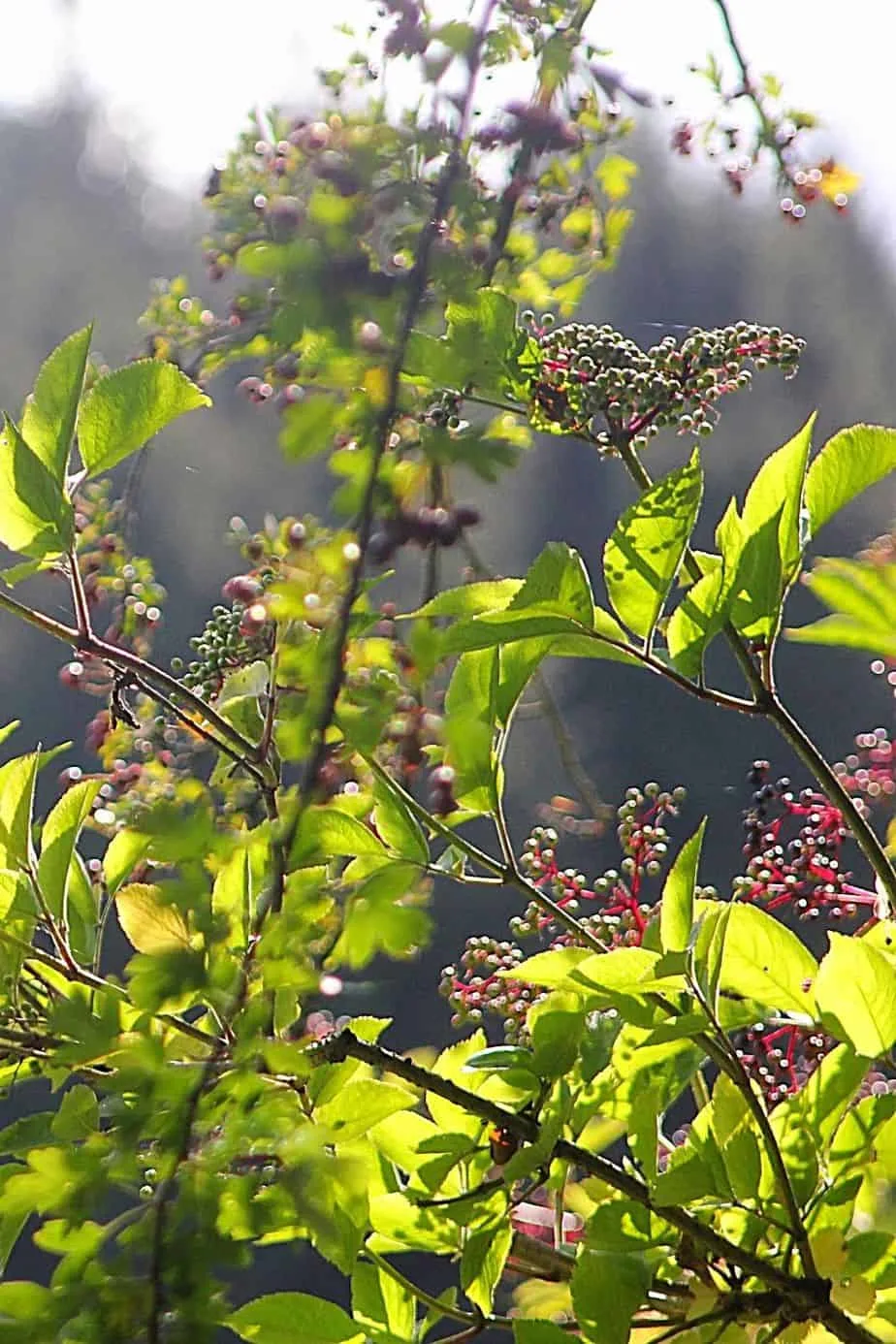
Elderberry is another great addition to your collection of plants great for privacy
Elderberries aren’t usually cultivated in containers, but it’s possible. If you look after your elderberries, they will produce lovely fragrant blossoms and tasty fruits.
You should use soil with a pH of 5.5 to 6.5 and maintain it consistently wet. To increase ventilation and avoid root rotting, add stones to the soil.
A 10-10-10 fertilizer applied in mid-winter spring will help your Elderberries. Remember to trim them in spring or summer to prevent these plants from outgrowing their pots.
- Scientific name: Sambucus
- Light: 4 to 6 hours of direct sun
- Soil: Well-draining, moist, and fertile soil
- Water: One inch of watering per week
- Fertilizer: Compost or manure during early spring
- Temperature: As low as -37 degrees Celsius (-35 degrees Fahrenheit)
- Humidity: Moderate
18. Hydrangea
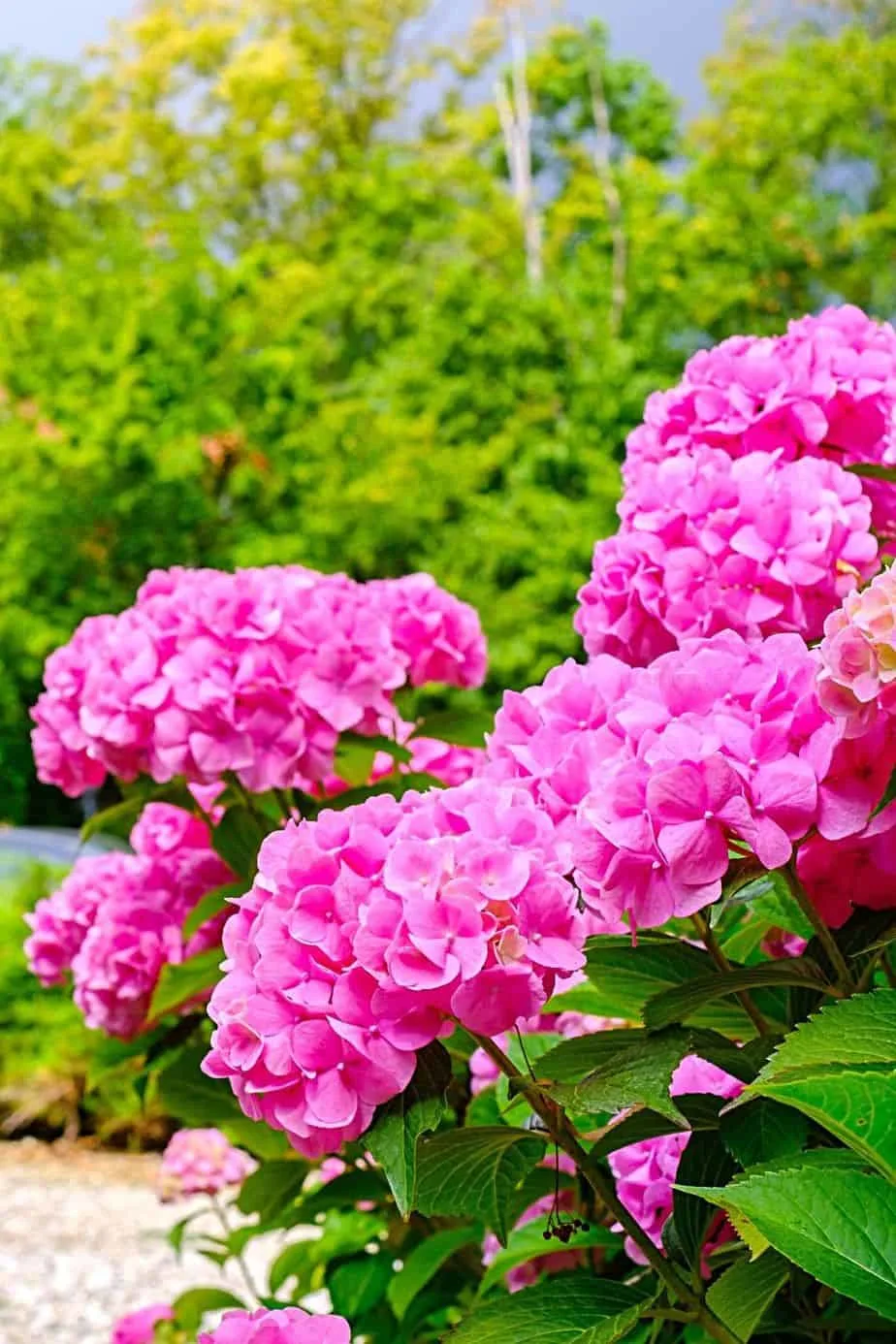
Hydrangea, as it grows 8 feet tall and 8 feet wide, is another plant you can grow for privacy
Hydrangea trees can reach a width of 8 feet and a height of 8 feet, making them excellent hedge species.
The cone-shaped blossoms on these shrubs create a gardening centerpiece when grown in a line.
One disclaimer: hydrangeas don’t give year-round protection because their foliage falls off in the autumn. You can combine them with the other hedging plants throughout their off-season to keep some protection.
- Scientific name: Hydrangea
- Light: Minimum 6 hours of sunlight
- Soil: Well-draining, loamy and moist
- Water: 1 inch weekly in its growing season
- Fertilizer: Balanced, all-purpose fertilizer
- Temperature: 50 to 59 degrees Fahrenheit (10-14 degrees Celsius)
- Humidity: Average high humidity
19. Elephant Ear
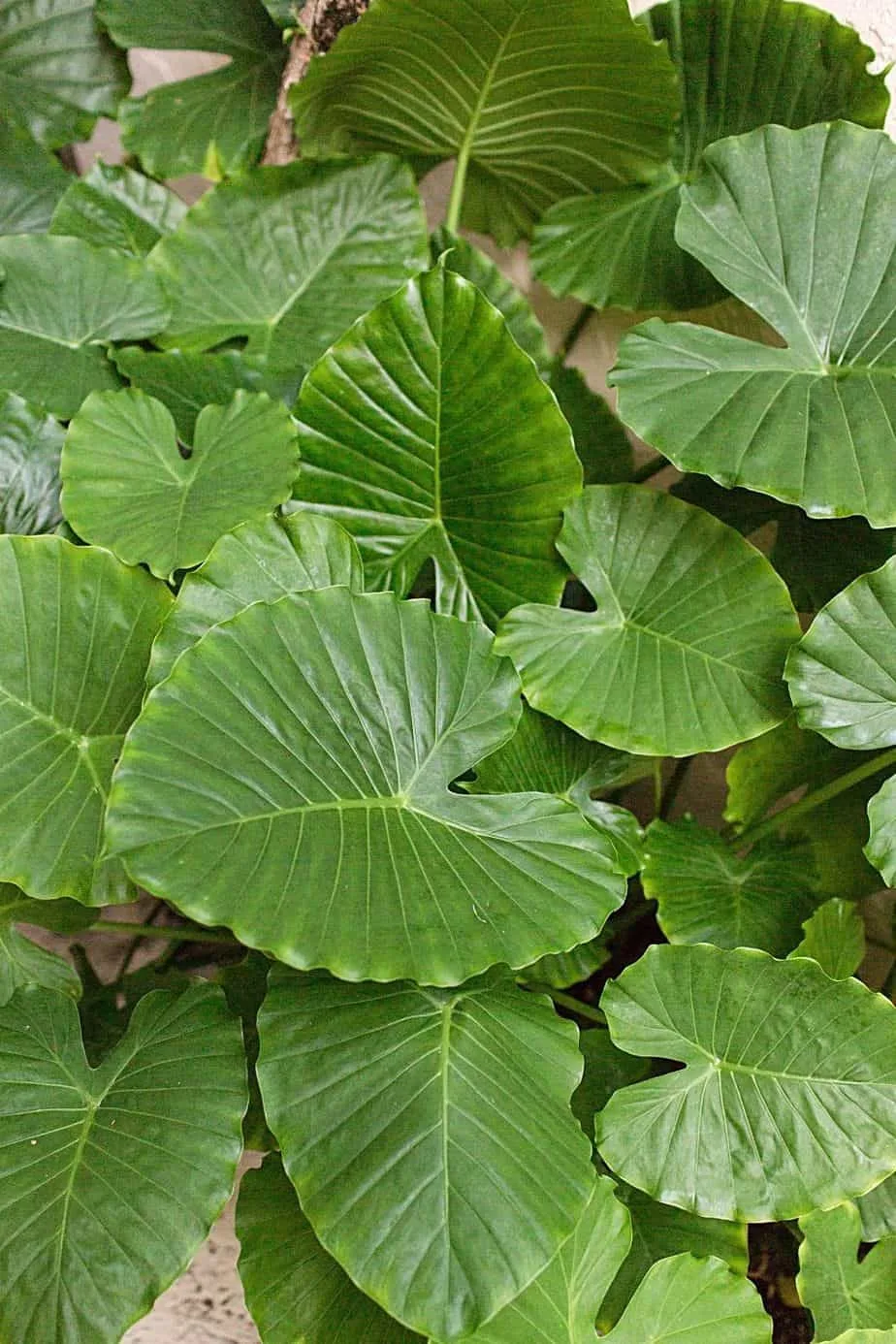
Elephant Ear can be a great plant to grow for the privacy of your garden or porch
With its spectacular foliage, Elephant Ear is ideal for providing privacy on the porch or garden. It’s a tropical species that thrives in hot climates and large pots.
Place the Elephant Ear pot in a bright location on your terrace and add manure to the soil for a nutritious increase.
A slow-release fertilizer will aid in developing the most magnificent leaves ever seen on an Elephant Ear.
- Scientific name: Colocasia
- Light: Indirect, bright light
- Soil: Well-draining, rich and moist
- Water: When the soil’s slightly moist, water it again
- Fertilizer: A water-soluble organic fertilizer
- Temperature: 21-28 degrees Celsius (70-84 degrees Fahrenheit)
- Humidity: Moderate
20. Switchgrass
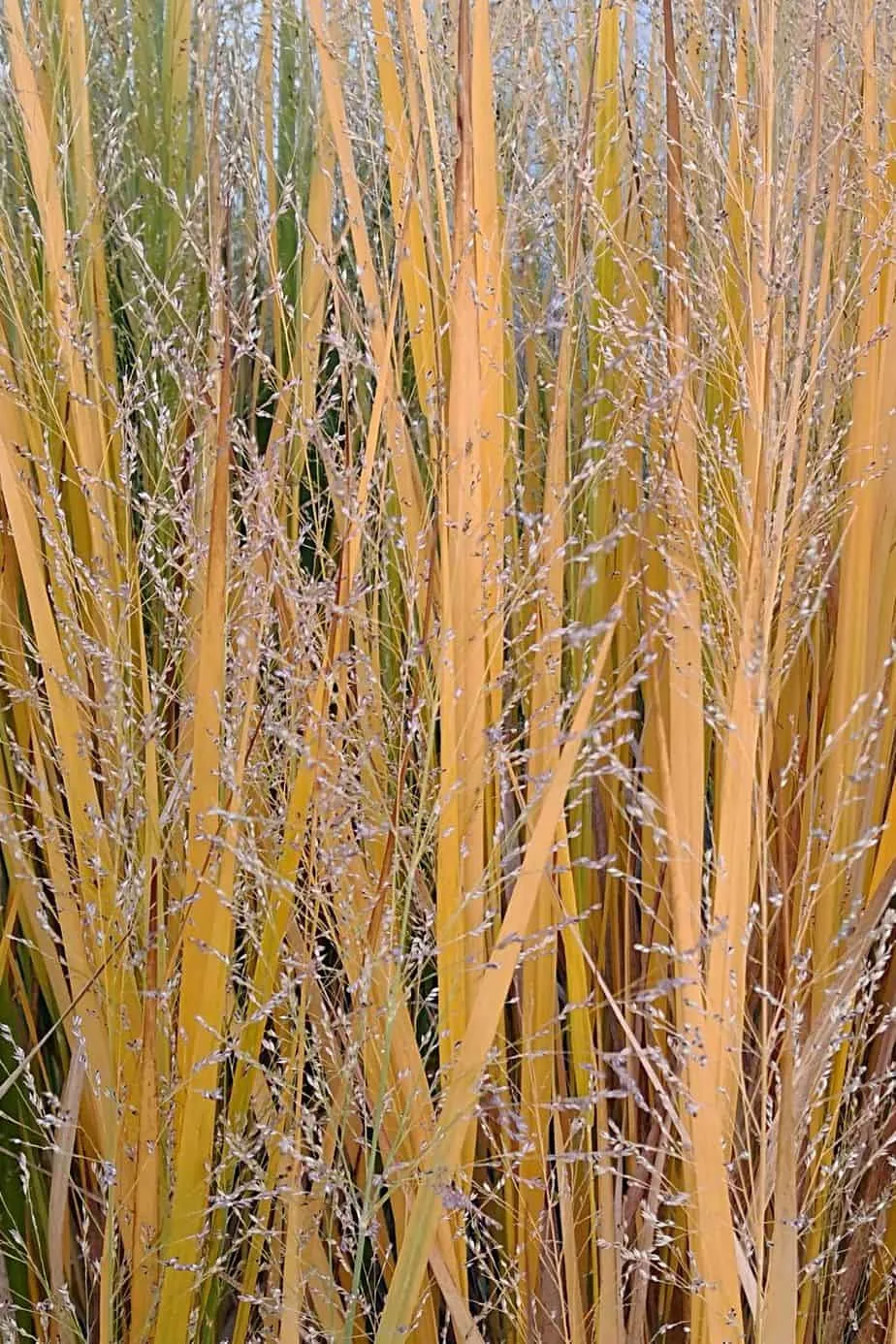
Switchgrass, though being a grass, is another plant you can grow for privacy
Switchgrass is a tall, blooming grass with an appealing appearance. The growing period begins in July and continues until the end of October.
Many plant arrangements benefit from adding grass, which provides drama and elevation. It also works nicely on a balcony.
Switchgrass will adjust to the circumstances, whether in full sun or moderate shade. Switchgrass does not require any extra attention aside from regular irrigation.
- Scientific name: Panicum virgatum
- Light: Partial shade
- Soil: Loamy, clayey or sandy soil
- Water: 1-2 inches of deep watering
- Fertilizer: Nitrogen-rich fertilizer
- Temperature: 25 to 35 degrees Fahrenheit (-3 to 1 degree Celsius)
- Humidity: Up to 70 %
21. Fountain Grass

Fountain Grass is a lovely decorative grass you can grow for privacy
Fountain grass is a lovely decorative grass that creates a spectacular environmental impact! It has violet flower peaks on the branch tops and spreads like bushes.
Fountain grass thrives when placed in bright sunlight but can also thrive in moderately shaded areas. In the shade, unfortunately, it will not blossom.
Fountain grass grows well in humid, well-drained, and somewhat acidic soil. Generally, it’s a low-maintenance decorative grass that’s perfect for gardening edges and privacy.
- Scientific name: Pennisetum setaceum
- Light: Favours full sun but can endure partial shade
- Soil: Well-draining, fertile soil
- Water: Water thoroughly every week or two
- Fertilizer: Balanced fertilizer having compost, rotted manure, or leaf mold
- Temperature: 75 to 85 degrees Fahrenheit (23-29 degrees Celsius)
- Humidity: Moderate
22. Holly
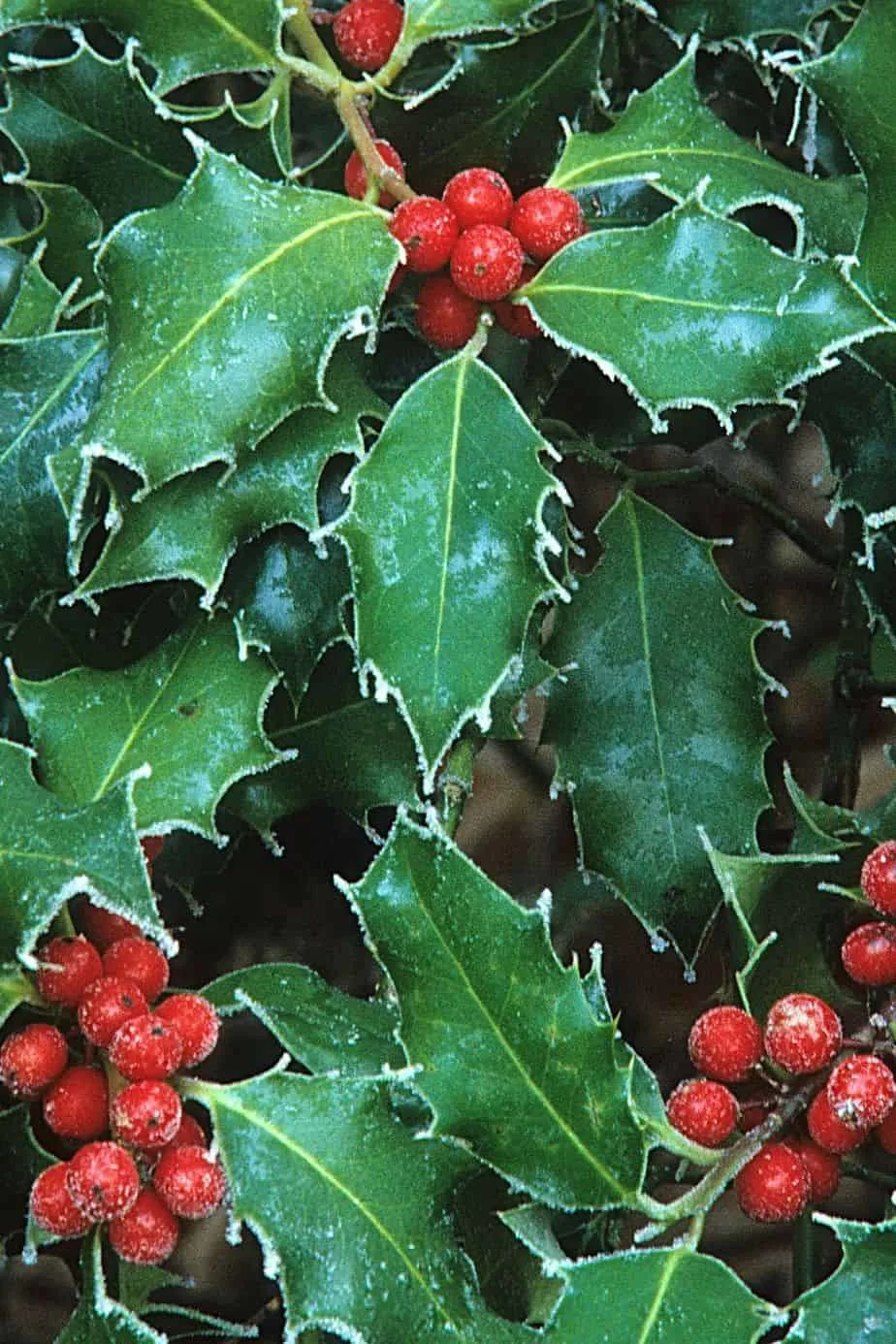
Holly is another stunning addition to your collection of plants you can grow for privacy
Holly comes in various kinds that offer good privacy in the backyard.
Holly comes in various sizes and hues, including tall trees, thick bushes, and various colors ranging from evergreen to multicolored.
A spiny leaf is a good option if you have little kids, a soft-leafed version without the plant’s trademark pointy.
- Scientific name: Ilex
- Light: 4 hours of direct sunlight daily
- Soil: Well-draining, loamy and moist
- Water: Once a week when immature and twice once established
- Fertilizer: Fertilizer with an NPK ratio of 10-20-20
- Temperature: 20 to 25 degrees Fahrenheit (-26 to -3 degrees Celsius)
- Humidity: 50%
23. Junipers
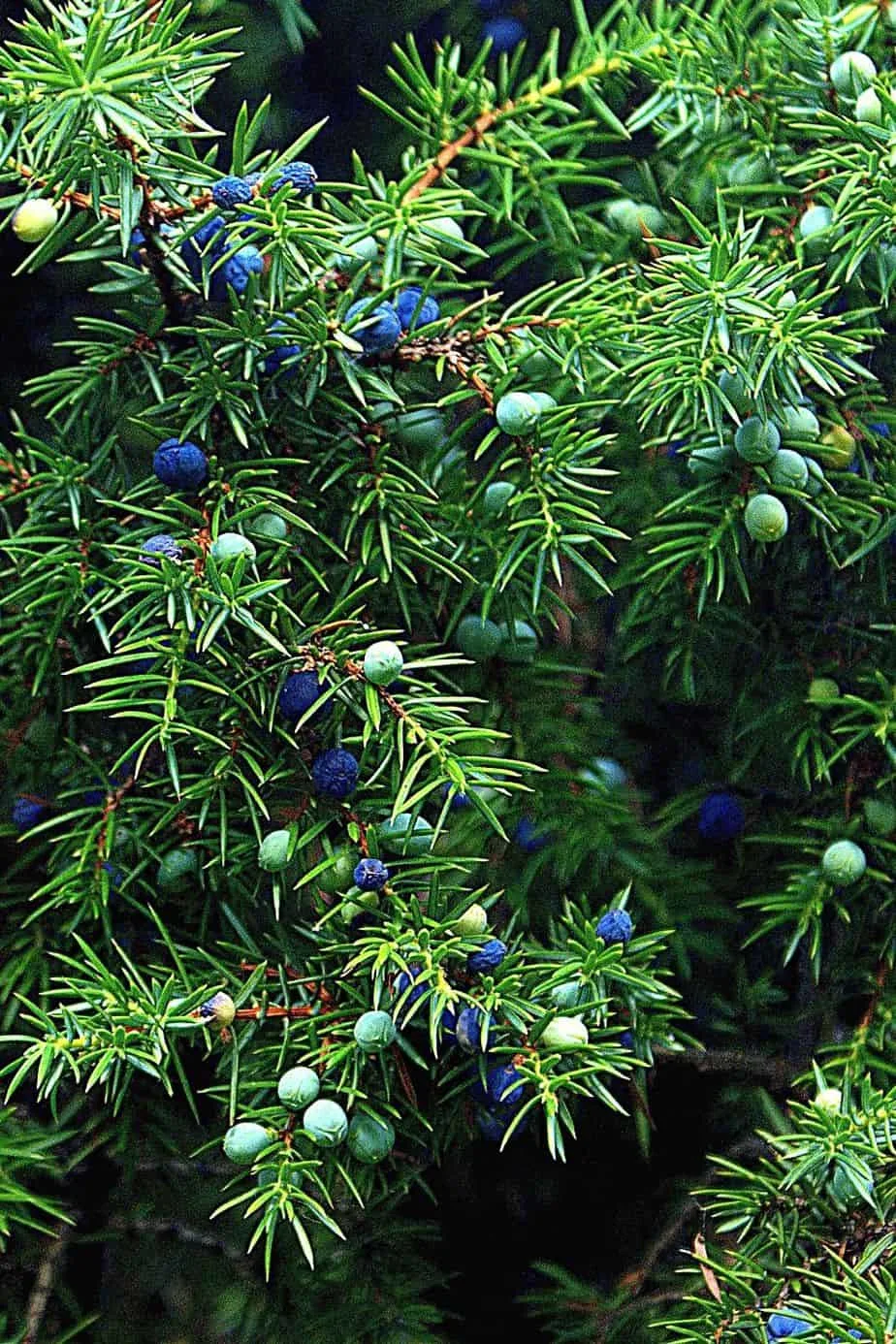
Junipers can grow up to 10 feet tall, hence, are great plants to grow for privacy
Juniper plants come in a variety of types that create good privacy screens. Californian and Sierra junipers, for example, can reach a height of 10 feet or over.
Some types are best suitable for big holdings, whereas others, such as the Spartan, can be grown close collectively.
Junipers are also good for deflecting wind because of their dense foliage.
- Scientific name: Juniperus
- Light: 6 hours of direct sunlight
- Soil: Well-draining soil
- Water: Immature plant needs water every week, but once established, reduce watering to two weeks
- Fertilizer: Balanced fertilizer in early spring and late winter
- Temperature: As low as -49 degrees Fahrenheit (-45 degrees Celsius)
- Humidity: Moderate
24. Clematis
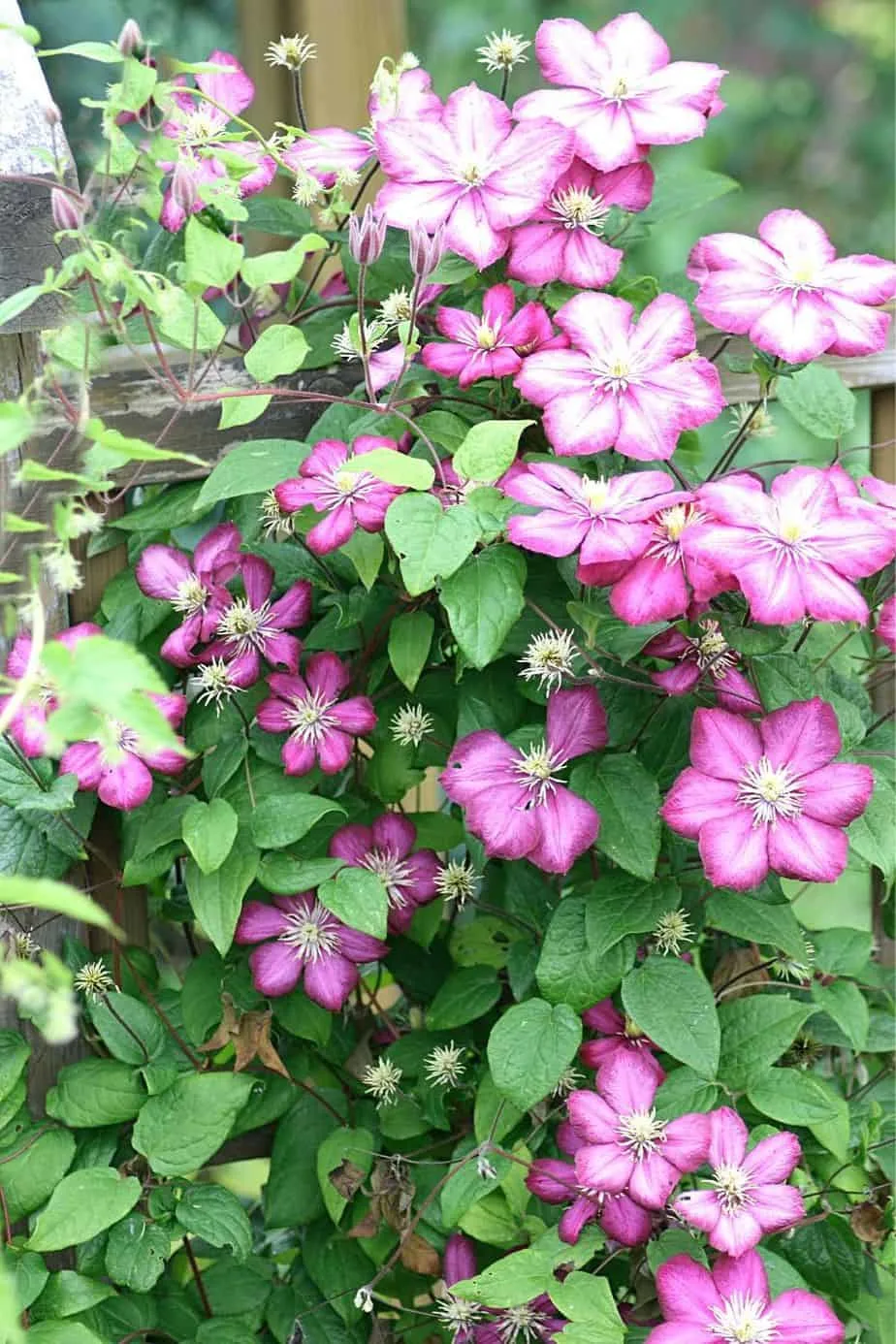
Clematis is part of a collection of plants you can grow for privacy
Growing a Group 3 rising clematis will get a shaded canopy with enormous, lovely blooms and dense leaves.
Offer it a trimming in early spring to get it to full height and maintain tucking in the ends to produce thickness.
Add a handful of clematis along either side of the bridge, and they’ll start climbing over it all, giving a great sense of privacy. ‘Mary Rose’ or ‘Ernest Markham’ are two examples.
- Scientific name: Clematis
- Light: 3-4 hours of the direct morning sun
- Soil: Moist, fertile and well-draining
- Water: 2-3 times during the early growth period
- Fertilizer: Low-nitrogen during the spring season
- Temperature: Night temperatures of about 45 degrees Fahrenheit (7.5 degrees Celsius)
25. Yucca
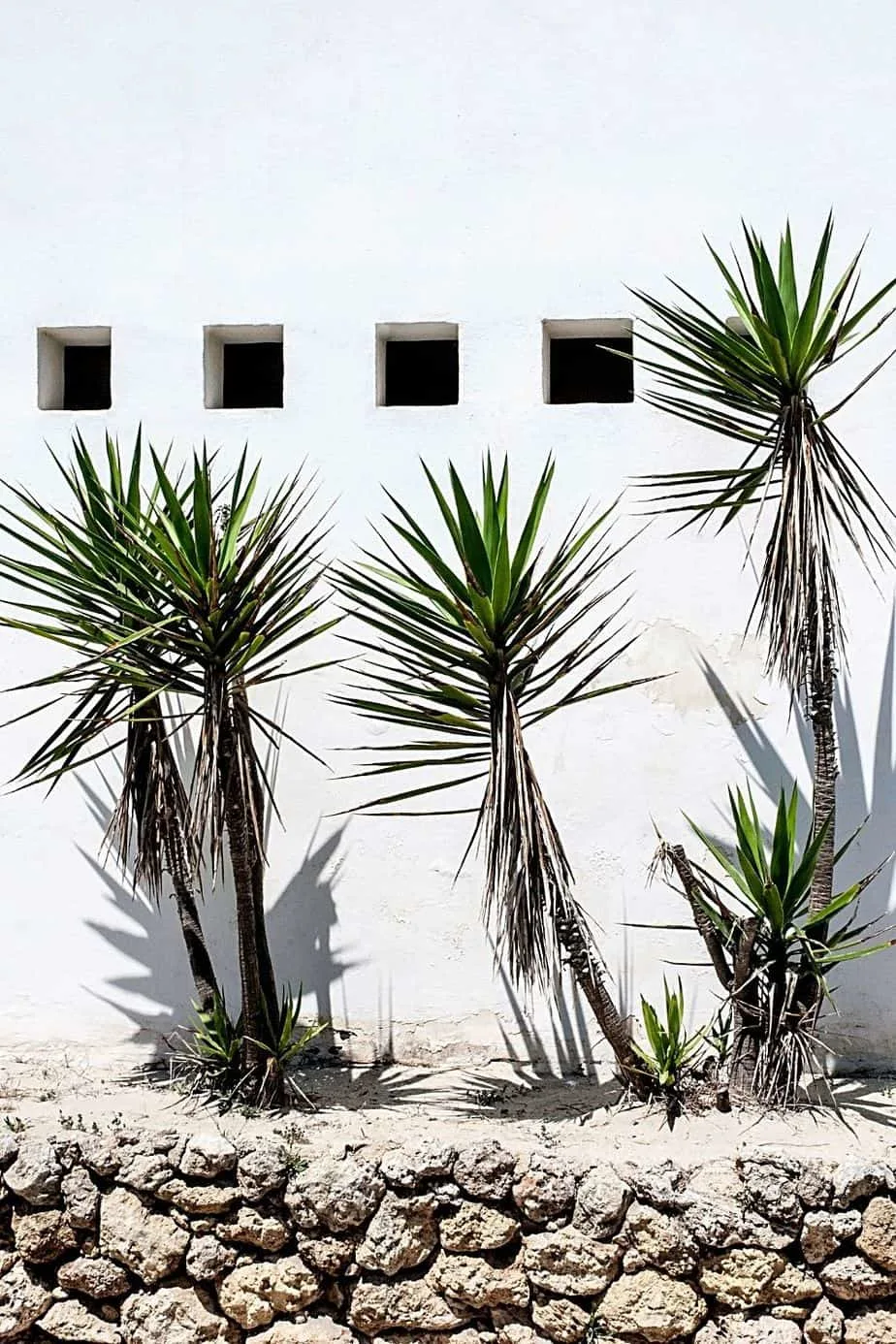
Yucca is another cheap plant you can grow in your garden for privacy
Yucca is among the cheapest plants to cultivate for privacy. You don’t have to be worried about the condition of the soil as far as it can maintain Yucca erect in the container.
When uncovered in the bright sun, Yucca flourishes but doesn’t require much watering. Remember to bring Yucca inside to keep it safe from cold and winter.
- Scientific name: Yucca
- Light: Indirect, bright light
- Soil: Well-draining, cactus soil
- Water: Water every two weeks based on the climate
- Fertilizer: Time-release nitrogen fertilizer
- Temperature: 65 to 85 degrees Fahrenheit (18-29 degrees Celsius)
- Humidity: Moderate
26. Bird of Paradise

Despite being a colorful plant, the Bird of Paradise can be grown for privacy
The exotic-looking Bird of Paradise necessitates a sunny location and a big pot. Choose a good garden soil for your Strelitzia and give it plenty of water, particularly after transplanting.
Afterward, when the soil seems dry, rinse the Bird of Paradise. Fertilizers should also be used throughout the planting season.
- Scientific name: Strelitzia
- Light: Bright, indirect sunlight
- Soil: Organic that drains well
- Water: Between watering sessions, make sure the soil’s top 2-3 inches are dry
- Fertilizer: Balanced fertilizer
- Temperature: 65-78 degrees Fahrenheit (18-24 degrees Celsius)
- Humidity: Minimum of 50%
27. Areca Palm

Areca Palm can add an exotic feel to your garden when you grow it for privacy
Thanks to the Areca palm, your balcony will have an appealing exotic feel, including much privacy. The Areca palm’s one of the palm species that thrive in pots.
Your Areca palm will require even less water in the winter.
Because the Areca palm is a sluggish climber, you won’t have to repot it very frequently. It’s ideal to do this every 2 – 3 years.
- Scientific name: Dypsis lutescens
- Light: Indirect, bright sunlight
- Soil: Porous, loose, containing sand
- Water: Distilled or rainwater once every week
- Fertilizer: Potassium-rich fertilizer during summer, spring, and fall
- Temperature: 60 to 75 degrees Fahrenheit (15-23 degrees Celsius)
- Humidity: Minimum of 40%
28. Boxwood
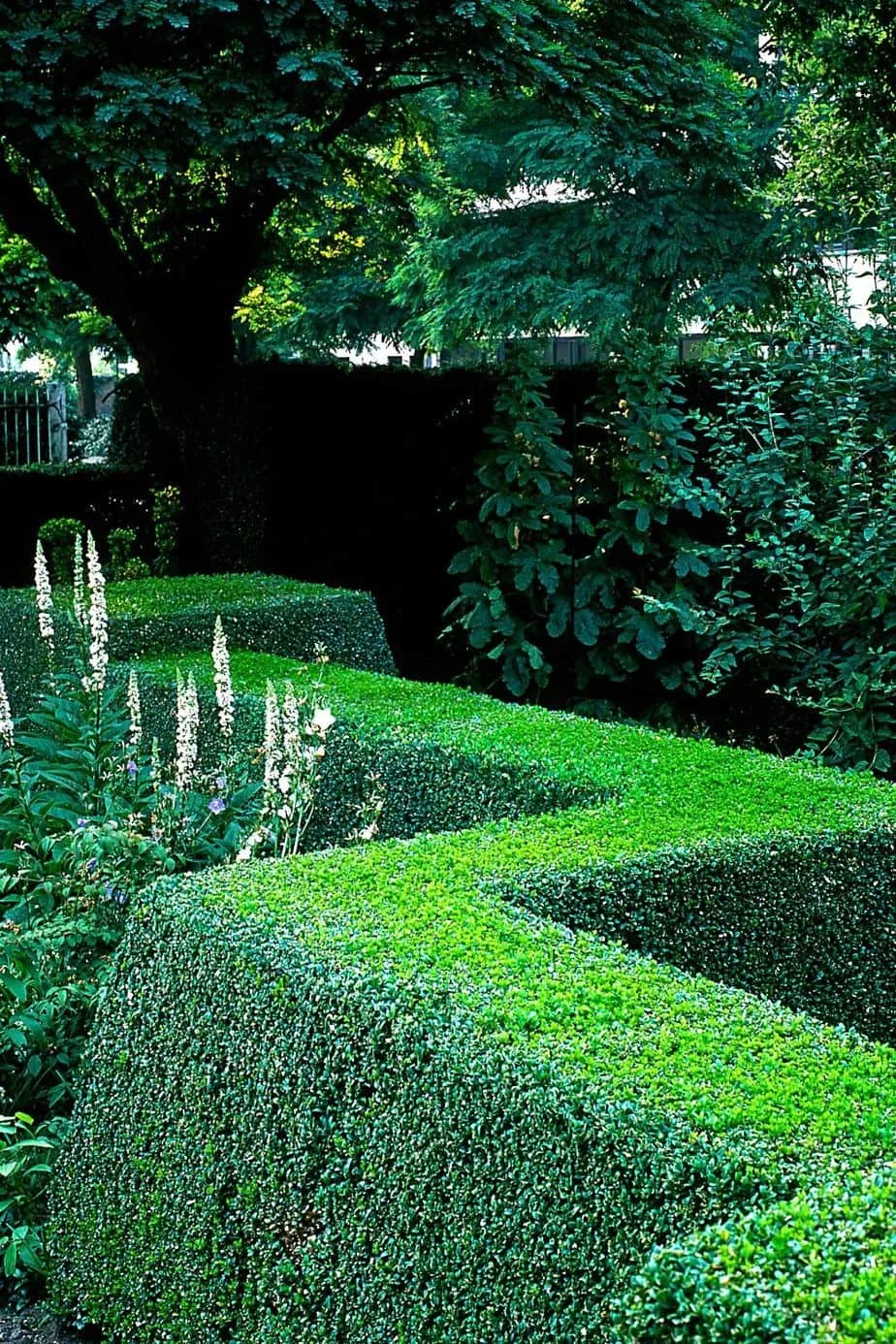
Boxwood is known for its dark, green leaves that are great for growing for privacy
Boxwood has traditionally been employed as a stylish trimmed fence in traditional landscapes, but it also looks lovely when not groomed.
Many people associate boxwoods with a dark green color, but lovely white mottled and golden variations are also lovely.
It will create a rich landscape and a thick, growing barrier to defend your property from public scrutiny, whether cultivated as a wall or in pots.
- Scientific name: Buxus
- Light: Partial shade
- Soil: Loamy sand soil that drains well
- Water: Regular watering in the early years, but once established, water it once a week
- Fertilizer: Balanced slow-release fertilizer
- Temperature: 60-79 degrees Fahrenheit (15-25 degrees Celsius)
- Humidity: Moderate
29. Norfolk Island Pine
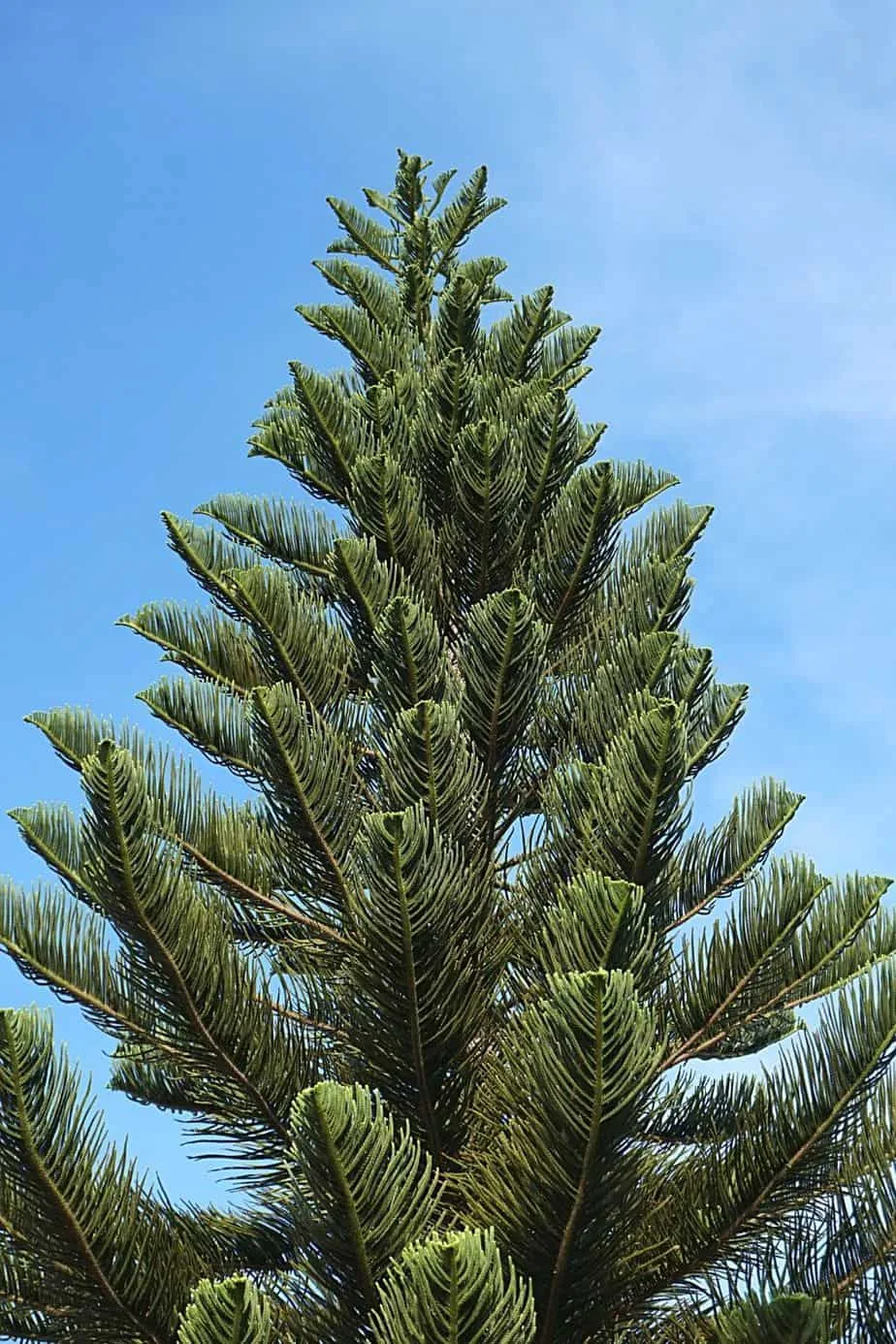
Norfolk Island Pine, though is a Holiday tree inside, is another great plant to grow for privacy
With its gorgeous leaves and thick branches, Norfolk Pine is often employed as a Holiday tree inside, but it would also shield you against the inquisitive neighbors.
Norfolk Island Pine is an easy-to-maintain, slow-growing tree that requires sunlight and regular irrigation.
If the wintertime in your region is mild, grow it on your balcony.
- Scientific name: Araucaria heterophylla
- Light: Direct or bright indirect sunlight
- Soil: Sandy potting mix is ideal
- Water: Irrigate it every one to two weeks
- Fertilizer: Balanced liquid fertilizer
- Temperature: 95 to 105 degrees Fahrenheit (35-40 degrees Celsius)
- Humidity: 50%
30. Sweet Bay Laurel
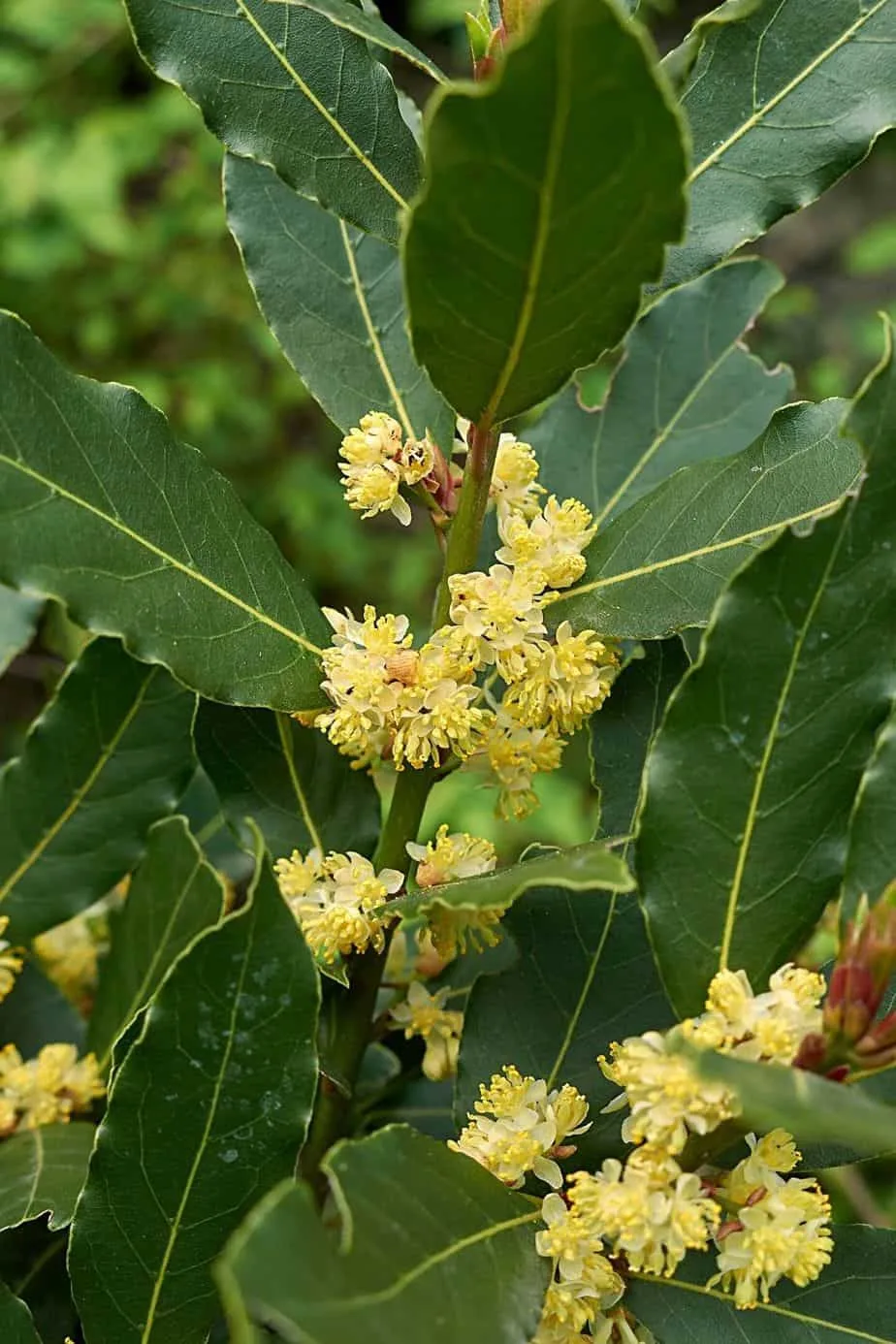
Sweet Bay Laurel, when grown in pots, will easily make a stunning privacy hedge
Sweet Bay Laurel has a relatively small form and abundant leaves. If you exhibit many Bay Laurels in pots, it will quickly liven up any terrace and give a privacy fence.
Bay Laurel foliage has been used in cooking, and the plant is easily grown.
- Scientific name: Laurus nobilis
- Light: Prefers full sun
- Soil: Sandy or rocky soil that drains well
- Water: Avoid overwatering and irrigate only when needed
- Fertilizer: Regular fertilizing during the summer and spring season
- Humidity: High humidity
With this list of the best plants for privacy, I am sure you will find plants you like and can grow in your garden.

Daniel has been a plant enthusiast for over 20 years. He owns hundreds of houseplants and prepares for the chili growing seasons yearly with great anticipation. His favorite plants are plant species in the Araceae family, such as Monstera, Philodendron, and Anthurium. He also loves gardening and is growing hot peppers, tomatoes, and many more vegetables.

![30 Best Plants for Privacy — Top Picks [2024]](https://plantophiles.com/wp-content/uploads/2022/04/30-Best-Plants-for-Privacy-720x405.jpg.webp)
